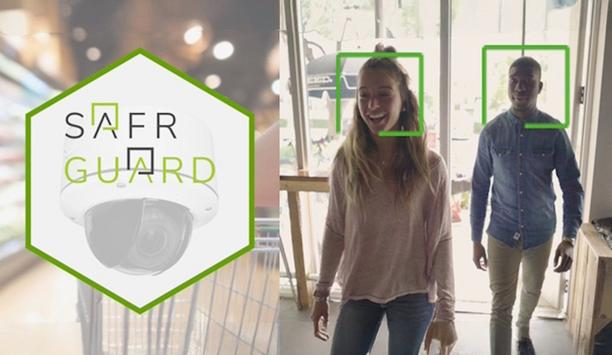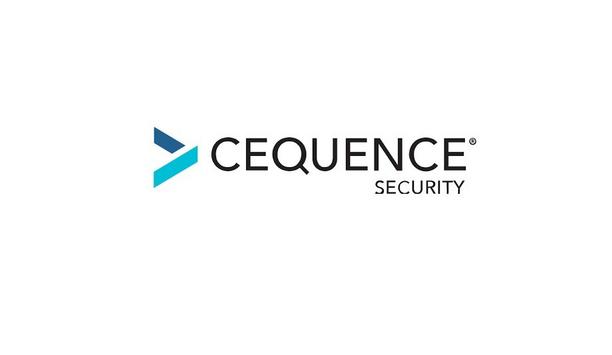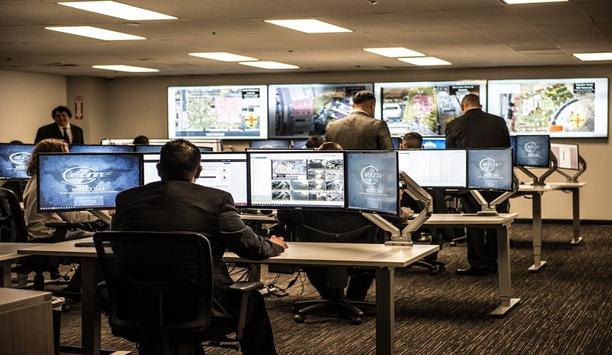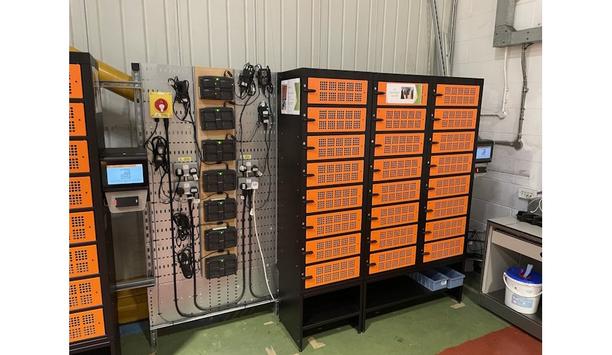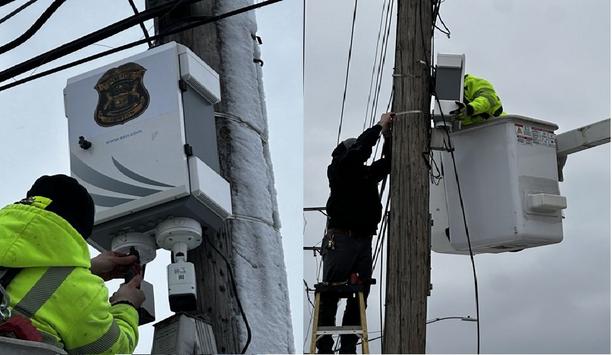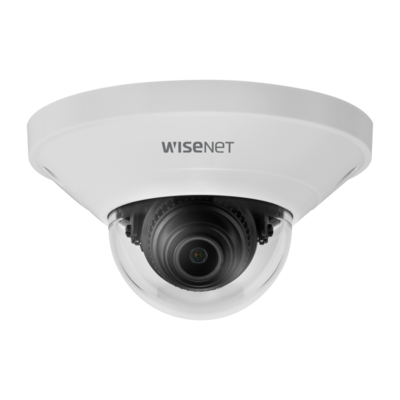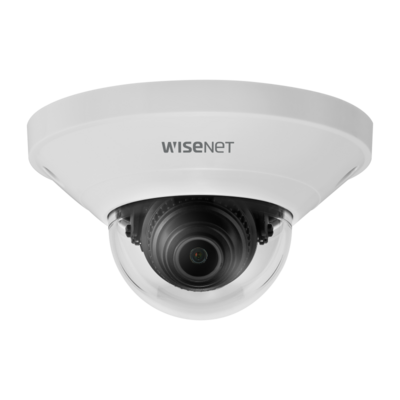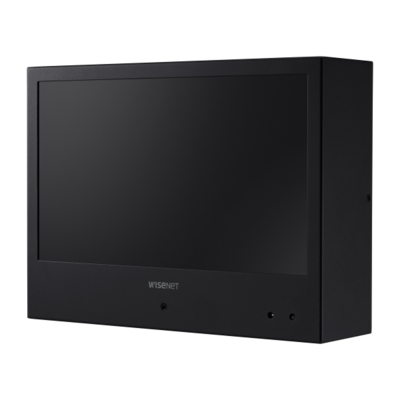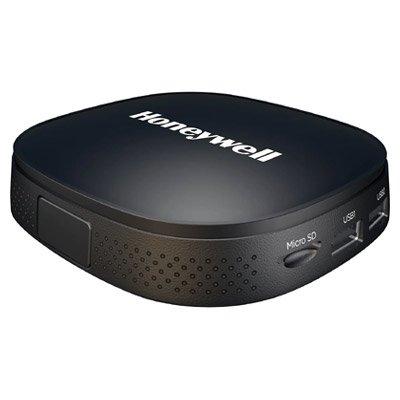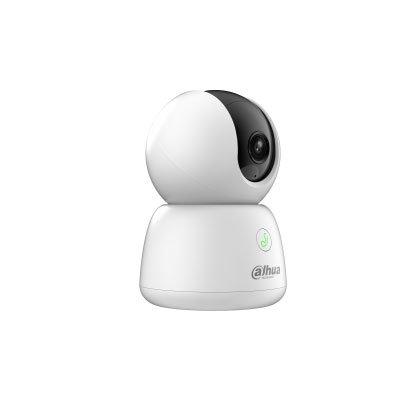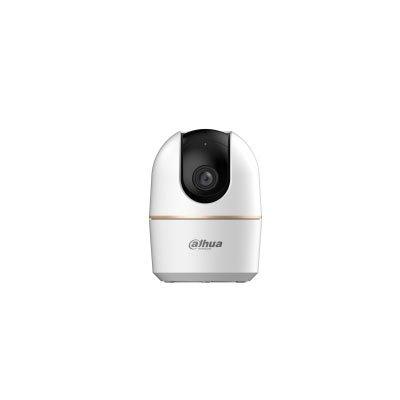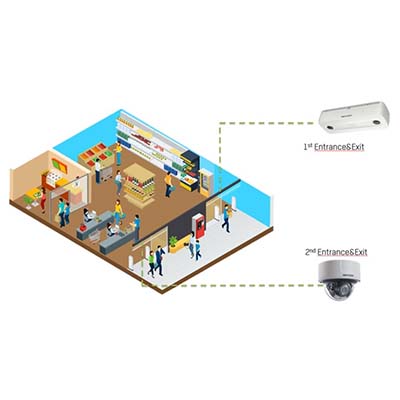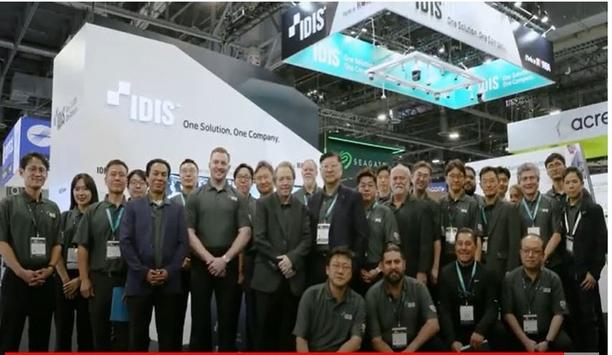Retail security systems
SAFR, a pioneer in AI-powered security solutions, announced the launch of SAFR® Guard, a powerful new product purpose-built for the Retail Loss Prevention and Asset Protection market. Designed to prevent shoplifting and retail crime before it happens, SAFR Guard makes shopping better and safer for both customers and employees. SAFR Guard delivers unmatched accuracy, speed, and simplicity while also respecting consumer privacy. SAFR’s proven AI platform SAFR Guard brin...
3DX-Ray has sold two AXIS-CXi, cabinet-based x-ray systems to secure high-threat sites in Rome, Italy. AXIS-CXi was originally designed to bring the same colour-differentiating image technology used in airport baggage screening, to the mail room environment. AXIS-CXi quickly showed its potential in a whole variety of security scenarios, from embassy lobbies to the homes of high-net-worth individuals. AXIS-CXi differentiated scans Grey scale is used for the recognition of shapes and the f...
ISC West 2025, organised by RX and in collaboration with the Security Industry Association, concluded at the Venetian Expo in Las Vegas last week. The nation’s pioneering comprehensive and converged security event attracted nearly 29,000 industry professionals and left a lasting impression on the global security community. Over five action-packed days, ISC West welcomed more than 19,000 attendees and featured 750 exhibiting brands. ISC West innovations and ideas “ISC Wes...
DeterTech, a pioneer in intruder detection and identification, is proud to announce the immediate availability of SmartSpray® for rental or purchase. It is considered a game-changer in tackling retail crime as it enables police to forensically link masked offenders back to the scene of their crime, even weeks after they’ve left the store. Effective CCTV storage Retail crime is at its highest level on record, with over 2,000 incidents of violence and abuse per day Retail crime is at...
Artificial Intelligence Technology Solutions, Inc., announced that its wholly owned subsidiary Robotic Assistance Devices, Inc., (RAD), has received two major awards at the 2025 Security Industry Association (SIA) New Products and Solutions (NPS) Awards. SARA™, RAD’s AI-powered incident response platform, earned the prestigious Judges’ Choice Award and was also selected as the winner in the Threat Detection and Response Solutions category. Both h...
Quanergy Solutions, Inc., the pioneer in high-performance 3D LiDAR security and smart space solutions, is showcasing its comprehensive portfolio of hardware and software solutions for both outdoor and indoor applications at ISC West 2025 booth #29081. Featured products include: Q-Track 2.4 software with powerful AI-driven insights; Q-Track LR for long range intrusion detection and perimeter protection; Q-Track HD for optimal detection, tracking and classification in challenging environments lik...
News
dormakaba's upcoming EasyAssist™ low energy swing door operator makes entrances more accessible, convenient, and hygienic – with lower costs and time savings from planning to installation. dormakaba will preview EasyAssist at booth #20007 during the International Security Conference and Exposition (ISC) West 2025 in Las Vegas (March 31 - April 4). Operating modes and functions EasyAssist can be used in offices, medical practice buildings, hotels, retail stores, and schools Thanks to its sleek, compact design, EasyAssist can be used in offices, medical practice buildings, hotels, retail stores, schools, and apartment buildings. The new EasyAssist low-energy operator is easy to plan, install, and operate, reliably ensures accessibility and safety, and is environmentally friendly. With its four different operating modes and additional functions, opening doors becomes considerably easier. EasyAssist low-energy operator “Our new EasyAssist low energy swing door operator, coming soon, perfectly demonstrates how entrances can be made more barrier-free, comfortable, and aesthetically pleasing at great value,” said Bret Holbrook, Senior Vice President of Access Hardware Solutions (AHS) and Access Control Solutions (ACS) Channel Sales for dormakaba North America. “Whether you want to easily automate or add accessibility to an interior door, EasyAssist makes life easier.” Push-N-Go feature Installation, commissioning, and configuration are simplified to save time and effort When EasyAssist is in automatic mode, the door opens automatically using a switch such as a push or wave plate. The Push-N-Go feature requires slight manual door movement, while Power Assist supports manual opening and Power Close ensures safe and silent closing of the door. Both standard doors and fire doors can be equipped with EasyAssist. Installation, commissioning, and configuration are simplified to save time and effort. With EasyAssist, all mounting positions are possible and can retrofit a standard mechanical door closer for consistent aesthetics through a facility. EasyAssist’s SmartArm with integrated cabling Additionally, EasyAssist’s SmartArm with integrated cabling allows for door leaf mounting without exposed wiring, enhancing security by deterring cable tampering and damage. Equipped with an Environmental Product Declaration (EPD) and Health Product Declaration (HPD), EasyAssist's environmental and health-related properties are presented transparently to enable architects, planners, and builders to make informed decisions for sustainable construction projects.
VIVOTEK, the pioneering security solution provider, has been committed to safeguarding communities and building a sustainable future since its founding in 2000. With "Care" as its core value, the company integrates cutting-edge security technologies to foster a safer and more sustainable world. Marking its 25th anniversary, VIVOTEK has unveiled its anniversary slogan, “MAKE TOMORROW EASIER, TODAY!” along with a refreshed brand identity, emphasising its focus on AI and cloud-driven solutions. Latest AI-powered security innovations VIVOTEK aims to simplify security by leveraging advanced technology, empowering customers VIVOTEK aims to simplify security by leveraging advanced technology, empowering customers to embrace a safer and more seamless future. As a key highlight of its 25th anniversary, VIVOTEK will showcase its latest AI-powered security innovations—integrated with the Vision Language Model—at ISC West 2025, the largest international security trade show in the U.S., this April, ushering in a new era of intelligent security solutions. Security industry's evolution "From a humble startup with fewer than 10 employees to a global enterprise with around 1,300 team members and a presence in over 100 countries, VIVOTEK has been at the forefront of the security industry's evolution—from analog to digital, IoT, cloud and AI." "With ‘Care’ as our driving force, we are dedicated to fulfilling the fundamental human need for security. Moving forward, we will continue to strengthen our AI and cloud capabilities, working hand in hand with our customers and partners to build a sustainable future," said VIVOTEK President Alex Liao. VIVOTEK’s experience vision VIVOTEK understands its customers' need for enhanced security efficiency To commemorate its 25th anniversary, VIVOTEK is launching a global campaign under the theme “MAKE TOMORROW EASIER, TODAY!” The company is also reviving its partner event —its first post-pandemic distributor gathering—bringing together hundreds of partners in Taiwan to experience VIVOTEK’s vision, explore key security technologies and discuss global market strategies. VIVOTEK understands its customers' need for enhanced security efficiency. It has integrated its full range of AI-powered cameras, AI-driven video analytics and AI-Powered cloud surveillance platform VORTEX into a hybrid cloud solution. VIVOTEK AI-driven solutions The number of connected VORTEX cameras has surpassed 10,000, enabling businesses to achieve greater efficiency, flexibility and security while maximising cost-effectiveness and security performance. Regarding vertical market strategy, VIVOTEK prioritises Smart Cities, Smart Transportation and Smart Manufacturing while also expanding into retail, education and sustainability sectors, bringing its AI-driven solutions to a global audience. VIVOTEK technological innovation and market expansion VIVOTEK remains committed to corporate social responsibility and sustainable development Beyond technological innovation and market expansion, VIVOTEK remains committed to corporate social responsibility and sustainable development. The company actively promotes green transformation and carbon reduction initiatives, develops energy-efficient products and strongly emphasises community engagement. VIVOTEK's smart security brand VIVOTEK has organised the “Safety Map Sustainability Event” for four consecutive years, enhancing local neighbourhoods, mental retardation training services institution, elementary school and historic village to improve community safety and environmental sustainability. With these efforts, VIVOTEK is paving its path toward becoming the world’s most trusted smart security brand.
AlgoSec, a cybersecurity pioneer, announced a double-digit year-on-year annual recurring revenue growth and a gross dollar retention of over 90%. The company has consistently generated positive cash flow and remained debt-free since it was founded in 2004. The company also saw an increase in multiple industry verticals, including Finance, Government, Telecommunications, Healthcare, Retail, Utilities and Transportation. AlgoSec’s strong market position AlgoSec has the highest number of employees and 70% more research and development engineers These accomplishments are a testament to AlgoSec’s strong market position, customer satisfaction and application-centric approach to cybersecurity across the hybrid environment. To effectively execute and meet the needs of the world’s largest organisations, AlgoSec has the highest number of employees and 70% more research and development engineers than any competitor. AlgoSec innovation and development According to Gartner, the fast-evolving threat environment is changing the cybersecurity industry, as a result of increases in generative AI, cloud adoption and regulations. As the cybersecurity industry continues to evolve and the needs of businesses change, AlgoSec remains committed to investing heavily in product innovation and development. AlgoSec Horizon platform AlgoSec Horizon platform serves as a single source for visibility into security and compliance issues Stemming directly from these market shifts, AlgoSec recently launched the AlgoSec Horizon Platform, the industry's first application-centric security management platform for the hybrid network environment. The AlgoSec Horizon platform serves as a single source for visibility into security and compliance issues across the hybrid network environment to automatically discover and identify their business applications across multi-clouds and remediate risks more effectively. AlgoSec’s consistent growth “As a company led by its founders and focused on its customers, AlgoSec’s consistent growth showcases our ability to empower the most complex organisations to securely accelerate their application delivery,” said Chris Thomas, Chief Revenue Officer at AlgoSec. “Heading into our 21st year of business, we look forward to pushing these efforts even further to help organisations future-proof their network security through our unique application-centric approach.” AlgoSec milestones Additional 2024 AlgoSec milestones and company accomplishments include: Winning two Cisco Partnership Awards, recognising the value for securing application connectivity across hybrid networks Being recognised with Established Vendor Designation in 2024 Gartner® Peer Insights™ Voice of the Customer for Network Automation Platforms Listing as a 2024 SC Awards Finalist: Best Enterprise Security Solution for AlgoSec’s application-centric platform Launching the company’s AI-powered security platform to securely manage application-centric connectivity and remediate risk in real time Ranking as the #1 network security management solution in the market by real users on Gartner Peer Insights, G2 and Peerspot For more information on AlgoSec’s vision for 2025 and beyond, and to discover why over 2,200 of the world's most complex organisations trust AlgoSec to help secure their most critical workloads.
HID, a pioneer in trusted identity and access control solutions, debuts its latest innovations at ISC West 2025. As the industry accelerates its shift toward mobile-first and seamless security integrations, HID has been working on solutions to create smoother and more secure access across touchpoints—from entryways to internal systems—optimising workflows and minimising disruptions. Integrated security ecosystems “HID is at the forefront of driving a world of seamless security, combining our deep expertise with continuous innovation to meet the evolving needs of modern access control and identification,” said Ramesh Songukrishnasamy, senior vice president and chief technology officer at HID. “As organisations embrace mobile-first solutions and integrated security ecosystems, HID remains committed to delivering cutting-edge technologies that streamline access, enhance user experiences, and reinforce security and secure identity at every touchpoint.” Future of secure identity and access control Visit HID at booth #8053 and Mercury™ at booth #27109, where attendees will have the opportunity to experience this shift firsthand, and see the future of secure identity and access control in action: HID Signo™ Readers: Versatile, Secure, and Future-Ready Reader, a multi-factor authentication key meeting FIPS-201 compliance and NIST 800-116 guidelines The flagship HID Signo Readers offer unparalleled versatility, supporting a broad range of credential technologies—including cards, fobs, digital wallets, and government-issued credentials like PIV, CAC, and TWIC. Designed for modern workplaces and high-security environments, the portfolio now includes the new HID Signo PIV Contact Reader, a multi-factor authentication solution meeting FIPS-201 compliance and NIST 800-116 guidelines. When integrated with Mercury MP4502 controllers, it delivers high-assurance security for U.S. Federal Government entities and organisations managing single facilities or global networks. New! Mercury Embedded Application Environment: Scalable, Interoperable, and Empowering The Mercury embedded application environment is an open platform that enables OEMs and technology partners to develop and deploy custom applications directly on Mercury MP Controllers. Unlike traditional access controllers that rely on server-based logic and are limited in upstream system connections, this platform brings real-time logic processing to the edge, reducing latency, increasing availability and enhancing system redundancy. New! HID Integration Service: Streamlined Connectivity and Enhanced Interoperability This integration platform-as-a-service (IPaaS) was designed to empower application developers, solution integrators, and software vendors to seamlessly and rapidly integrate essential physical security solutions, solving the industry-wide struggle with managing third-party integrations. New! OMNIKEY SE Plug Reader OMNIKEY SE Plug supports passkeys and other MFA methods for enhanced security Revolutionise logical access with a cable-free reader that provides secure, passwordless authentication for mobile professionals. Ideal for hybrid workplaces (like healthcare, retail, law enforcement and other enterprise environments), it ensures your workforce has seamless access to corporate resources from any location – whether in the field, while working remote or when travelling. This versatile reader offers multi-device compatibility — working effortlessly with smartphones, tablets and laptops using a USB-C interface. OMNIKEY SE Plug supports passkeys and other multi-factor authentication (MFA) methods for enhanced security against phishing and credential theft. HID Mobile Access: The Future of Secure, Contactless Authentication HID Mobile Access solutions leverage smartphones and wearables for secure, convenient and touchless authentication, making them ideal for any environment where access control is needed, including workplaces, universities, commercial real estate, financial institutions and more. Streamline management with the HID Origo™ portal, centralising user management and integrating seamlessly with access control systems. Reduce the need for physical encoding, printing, and returns, and embrace a future where access control is simple and efficient. HID Linq™: Smart Device Management and Real-Time Insights HID Linq tool provides real-time device state reporting and remote configuration HID will demonstrate the powerful HID Linq tool platform, designed for seamless device management through Mercury controllers and HID Signo readers. The HID Linq tool provides real-time device state reporting, remote configuration and adjustments capability, as well as seamless firmware updates. HID FARGO HPD5000e printer: High-quality, Personalised Retransfer Technology Making its ISC West debut, the printer was engineered for universities, medium-to-large businesses, healthcare facilities and government agencies who need retransfer printing technology to effectively personalise contactless cards and for any organisation looking to switch from a higher-end, direct-to-card printer to a retransfer printing solution for improved image quality. HID four speaking sessions Additionally, HID will showcase its industry leadership through participation in four speaking sessions, highlighting the expertise of its thought pioneers: The Impact of Identity on the Physical and Digital Access Landscape – April 1, 10 a.m. PST Security Women Actively Supporting Women – How to Develop and Enhance Employee Resource Groups Focused on Women – April 2, 2:15 p.m. PST Retrospective/Future: What Does the Security Experience for Today’s Younger Generation Mean for the Future? April 2, 11:15 a.m. PST Optimising the Future of Workplace Experience – April 1, 1 p.m. PST
Security Industry Association (SIA) testified before the California Assembly Committee on Revenue and Taxation in support of California Assembly Bill 976, legislation that would establish a tax credit program for small retailers in disadvantaged communities who purchase or install security equipment. The bill, introduced Feb. 20 by Assembly Member Anamarie Ávila Farías (D-15), would create a tax program modelled after New York’s Commercial Security Tax Credit program, but narrower in scope – focused on small retail businesses operating in disadvantaged communities – to assist businesses with one-time costs associated with the purchase and installation of new security equipment. Implement the protections “Small retail businesses – especially those in communities with higher levels of crime – struggle to implement the protections required to safeguard their employees, merchandise and livelihoods,” said George Sewell, manager of government relations at SIA. “Theft impacting small retailers causes harm not just to business owners, but also to customers in the form of higher prices to make up losses and to governments in lost sales tax revenue, and retail crime also fuels in-store violence that costs victims their lives.” Businesses invest in security equipment SIA is the organisational sponsor of this legislation, which is also supported by the California Retailers Association, the Family Business Association of California and NFIB California. “Retail theft is a serious challenge for both businesses and consumers, especially for small businesses in disadvantaged communities where security costs can be a major burden,” said Ávila Farías. “AB 976 creates a tax credit program to help businesses invest in security equipment, making it easier to protect their stores, support local economies and reduce costs for all Californians.”
Cequence Security, a pioneer in API security and bot management, unveiled new insights from its CQ Prime threat research team that reveal a surge in cyber threats as businesses race to comply with the March 31 PCI DSS 4.0 deadline. The research underscores the escalating risks of API-driven fraud, credential stuffing, and payment system abuse, particularly in retail and financial services. Drawing on billions of real transactions and attack data from Cequence’s Unified API Protection (UAP) platform, the report highlights the growing attack surface cybercriminals exploit in payment infrastructure, loyalty programs, and product pricing systems. Key findings Scale of Credential Attacks: As the PCI DSS 4.0 deadline approaches, automated fraud is accelerating. More than 300 million account takeover (ATO) attempts were blocked in the past year, illustrating the growing scale of credential stuffing attacks. Retail’s High-Stakes Battleground: Retailers faced 66.5% of all malicious traffic, highlighting their vulnerability due to high transaction volumes and fragmented security postures. Product Search & Pricing Abuse: A staggering 822 million attempts were blocked as 89% of non-ATO bot-driven attacks focused on scraping product pricing. This enables competitive algorithm manipulation, scalping, and real-time price undercutting of legitimate retailers. Loyalty Rewards Abuse: Over 22 million fraudulent attempts were blocked as attackers exploited loyalty programs, treating reward points like cash. These accounts are frequently drained due to easier liquidation than stolen credit cards, often going undetected until significant losses occur. Shopping Cart & Inventory Abuse: Nearly 6 million attacks were prevented as fraudsters weaponised automation to hoard high-demand products. Credit Verification Fraud: Over 69 million attempts were blocked as cybercriminals mass-tested stolen credit card details through low-risk transactions before making larger fraudulent purchases, fuelling the circulation of compromised payment data. Traditional security defences for API PCI DSS 4.0 introduces critical security updates, many businesses still struggle with API protection “PCI DSS 4.0 is pushing businesses to modernise security, but many are still scrambling to catch up, giving attackers the perfect opportunity to strike,” said Randolph Barr, CISO at Cequence. “Account takeovers remain the biggest threat, but we’re also seeing a wave of new, highly sophisticated attacks exploiting every stage of the digital payment process. The common thread? APIs. Attackers are sidestepping traditional security defences and going straight for API endpoints that handle cardholder data - one of the most critical yet overlooked vulnerabilities. Businesses that focus only on compliance risk falling behind.” While PCI DSS 4.0 introduces critical security updates, many businesses still struggle with API protection, an area that attackers are actively exploiting. Key actions of Cequence To ensure compliance while defending against real-world threats, Cequence recommends these key actions: Ensure Secure Data Transmission: Encrypt all Primary Account Number (PAN) information when transmitted over open, public networks to prevent unauthorised access. Secure API Endpoints: Identify all API endpoints that transmit PAN and ensure they only transmit encrypted PAN, reducing the risk of data exposure. Proactively Identify Vulnerabilities: Inspect custom application code for security flaws before deployment using automated tools to identify risks in APIs, third-party integrations, and custom applications. Continuously Test and Monitor: Regularly test APIs and applications for misconfigurations or vulnerabilities before production and monitor them for anomalous or malicious behaviour in real time. Deploy Automated Preventative Controls: Use security solutions that prevent both conventional attacks and business logic abuse while ensuring sensitive data is not exposed to unauthorised entities. Implement Real-Time Threat Prevention: Identify and block malicious traffic before it reaches your applications using intelligent, automated security mechanisms.
dormakaba's upcoming EasyAssist™ low energy swing door operator makes entrances more accessible, convenient, and hygienic – with lower costs and time savings from planning to installation. dormakaba will preview EasyAssist at booth #20007 during the International Security Conference and Exposition (ISC) West 2025 in Las Vegas (March 31 - April 4). Operating modes and functions EasyAssist can be used in offices, medical practice buildings, hotels, retail stores, and schools Thanks to its sleek, compact design, EasyAssist can be used in offices, medical practice buildings, hotels, retail stores, schools, and apartment buildings. The new EasyAssist low-energy operator is easy to plan, install, and operate, reliably ensures accessibility and safety, and is environmentally friendly. With its four different operating modes and additional functions, opening doors becomes considerably easier. EasyAssist low-energy operator “Our new EasyAssist low energy swing door operator, coming soon, perfectly demonstrates how entrances can be made more barrier-free, comfortable, and aesthetically pleasing at great value,” said Bret Holbrook, Senior Vice President of Access Hardware Solutions (AHS) and Access Control Solutions (ACS) Channel Sales for dormakaba North America. “Whether you want to easily automate or add accessibility to an interior door, EasyAssist makes life easier.” Push-N-Go feature Installation, commissioning, and configuration are simplified to save time and effort When EasyAssist is in automatic mode, the door opens automatically using a switch such as a push or wave plate. The Push-N-Go feature requires slight manual door movement, while Power Assist supports manual opening and Power Close ensures safe and silent closing of the door. Both standard doors and fire doors can be equipped with EasyAssist. Installation, commissioning, and configuration are simplified to save time and effort. With EasyAssist, all mounting positions are possible and can retrofit a standard mechanical door closer for consistent aesthetics through a facility. EasyAssist’s SmartArm with integrated cabling Additionally, EasyAssist’s SmartArm with integrated cabling allows for door leaf mounting without exposed wiring, enhancing security by deterring cable tampering and damage. Equipped with an Environmental Product Declaration (EPD) and Health Product Declaration (HPD), EasyAssist's environmental and health-related properties are presented transparently to enable architects, planners, and builders to make informed decisions for sustainable construction projects.
VIVOTEK, the pioneering security solution provider, has been committed to safeguarding communities and building a sustainable future since its founding in 2000. With "Care" as its core value, the company integrates cutting-edge security technologies to foster a safer and more sustainable world. Marking its 25th anniversary, VIVOTEK has unveiled its anniversary slogan, “MAKE TOMORROW EASIER, TODAY!” along with a refreshed brand identity, emphasising its focus on AI and cloud-driven solutions. Latest AI-powered security innovations VIVOTEK aims to simplify security by leveraging advanced technology, empowering customers VIVOTEK aims to simplify security by leveraging advanced technology, empowering customers to embrace a safer and more seamless future. As a key highlight of its 25th anniversary, VIVOTEK will showcase its latest AI-powered security innovations—integrated with the Vision Language Model—at ISC West 2025, the largest international security trade show in the U.S., this April, ushering in a new era of intelligent security solutions. Security industry's evolution "From a humble startup with fewer than 10 employees to a global enterprise with around 1,300 team members and a presence in over 100 countries, VIVOTEK has been at the forefront of the security industry's evolution—from analog to digital, IoT, cloud and AI." "With ‘Care’ as our driving force, we are dedicated to fulfilling the fundamental human need for security. Moving forward, we will continue to strengthen our AI and cloud capabilities, working hand in hand with our customers and partners to build a sustainable future," said VIVOTEK President Alex Liao. VIVOTEK’s experience vision VIVOTEK understands its customers' need for enhanced security efficiency To commemorate its 25th anniversary, VIVOTEK is launching a global campaign under the theme “MAKE TOMORROW EASIER, TODAY!” The company is also reviving its partner event —its first post-pandemic distributor gathering—bringing together hundreds of partners in Taiwan to experience VIVOTEK’s vision, explore key security technologies and discuss global market strategies. VIVOTEK understands its customers' need for enhanced security efficiency. It has integrated its full range of AI-powered cameras, AI-driven video analytics and AI-Powered cloud surveillance platform VORTEX into a hybrid cloud solution. VIVOTEK AI-driven solutions The number of connected VORTEX cameras has surpassed 10,000, enabling businesses to achieve greater efficiency, flexibility and security while maximising cost-effectiveness and security performance. Regarding vertical market strategy, VIVOTEK prioritises Smart Cities, Smart Transportation and Smart Manufacturing while also expanding into retail, education and sustainability sectors, bringing its AI-driven solutions to a global audience. VIVOTEK technological innovation and market expansion VIVOTEK remains committed to corporate social responsibility and sustainable development Beyond technological innovation and market expansion, VIVOTEK remains committed to corporate social responsibility and sustainable development. The company actively promotes green transformation and carbon reduction initiatives, develops energy-efficient products and strongly emphasises community engagement. VIVOTEK's smart security brand VIVOTEK has organised the “Safety Map Sustainability Event” for four consecutive years, enhancing local neighbourhoods, mental retardation training services institution, elementary school and historic village to improve community safety and environmental sustainability. With these efforts, VIVOTEK is paving its path toward becoming the world’s most trusted smart security brand.
AlgoSec, a cybersecurity pioneer, announced a double-digit year-on-year annual recurring revenue growth and a gross dollar retention of over 90%. The company has consistently generated positive cash flow and remained debt-free since it was founded in 2004. The company also saw an increase in multiple industry verticals, including Finance, Government, Telecommunications, Healthcare, Retail, Utilities and Transportation. AlgoSec’s strong market position AlgoSec has the highest number of employees and 70% more research and development engineers These accomplishments are a testament to AlgoSec’s strong market position, customer satisfaction and application-centric approach to cybersecurity across the hybrid environment. To effectively execute and meet the needs of the world’s largest organisations, AlgoSec has the highest number of employees and 70% more research and development engineers than any competitor. AlgoSec innovation and development According to Gartner, the fast-evolving threat environment is changing the cybersecurity industry, as a result of increases in generative AI, cloud adoption and regulations. As the cybersecurity industry continues to evolve and the needs of businesses change, AlgoSec remains committed to investing heavily in product innovation and development. AlgoSec Horizon platform AlgoSec Horizon platform serves as a single source for visibility into security and compliance issues Stemming directly from these market shifts, AlgoSec recently launched the AlgoSec Horizon Platform, the industry's first application-centric security management platform for the hybrid network environment. The AlgoSec Horizon platform serves as a single source for visibility into security and compliance issues across the hybrid network environment to automatically discover and identify their business applications across multi-clouds and remediate risks more effectively. AlgoSec’s consistent growth “As a company led by its founders and focused on its customers, AlgoSec’s consistent growth showcases our ability to empower the most complex organisations to securely accelerate their application delivery,” said Chris Thomas, Chief Revenue Officer at AlgoSec. “Heading into our 21st year of business, we look forward to pushing these efforts even further to help organisations future-proof their network security through our unique application-centric approach.” AlgoSec milestones Additional 2024 AlgoSec milestones and company accomplishments include: Winning two Cisco Partnership Awards, recognising the value for securing application connectivity across hybrid networks Being recognised with Established Vendor Designation in 2024 Gartner® Peer Insights™ Voice of the Customer for Network Automation Platforms Listing as a 2024 SC Awards Finalist: Best Enterprise Security Solution for AlgoSec’s application-centric platform Launching the company’s AI-powered security platform to securely manage application-centric connectivity and remediate risk in real time Ranking as the #1 network security management solution in the market by real users on Gartner Peer Insights, G2 and Peerspot For more information on AlgoSec’s vision for 2025 and beyond, and to discover why over 2,200 of the world's most complex organisations trust AlgoSec to help secure their most critical workloads.
HID, a pioneer in trusted identity and access control solutions, debuts its latest innovations at ISC West 2025. As the industry accelerates its shift toward mobile-first and seamless security integrations, HID has been working on solutions to create smoother and more secure access across touchpoints—from entryways to internal systems—optimising workflows and minimising disruptions. Integrated security ecosystems “HID is at the forefront of driving a world of seamless security, combining our deep expertise with continuous innovation to meet the evolving needs of modern access control and identification,” said Ramesh Songukrishnasamy, senior vice president and chief technology officer at HID. “As organisations embrace mobile-first solutions and integrated security ecosystems, HID remains committed to delivering cutting-edge technologies that streamline access, enhance user experiences, and reinforce security and secure identity at every touchpoint.” Future of secure identity and access control Visit HID at booth #8053 and Mercury™ at booth #27109, where attendees will have the opportunity to experience this shift firsthand, and see the future of secure identity and access control in action: HID Signo™ Readers: Versatile, Secure, and Future-Ready Reader, a multi-factor authentication key meeting FIPS-201 compliance and NIST 800-116 guidelines The flagship HID Signo Readers offer unparalleled versatility, supporting a broad range of credential technologies—including cards, fobs, digital wallets, and government-issued credentials like PIV, CAC, and TWIC. Designed for modern workplaces and high-security environments, the portfolio now includes the new HID Signo PIV Contact Reader, a multi-factor authentication solution meeting FIPS-201 compliance and NIST 800-116 guidelines. When integrated with Mercury MP4502 controllers, it delivers high-assurance security for U.S. Federal Government entities and organisations managing single facilities or global networks. New! Mercury Embedded Application Environment: Scalable, Interoperable, and Empowering The Mercury embedded application environment is an open platform that enables OEMs and technology partners to develop and deploy custom applications directly on Mercury MP Controllers. Unlike traditional access controllers that rely on server-based logic and are limited in upstream system connections, this platform brings real-time logic processing to the edge, reducing latency, increasing availability and enhancing system redundancy. New! HID Integration Service: Streamlined Connectivity and Enhanced Interoperability This integration platform-as-a-service (IPaaS) was designed to empower application developers, solution integrators, and software vendors to seamlessly and rapidly integrate essential physical security solutions, solving the industry-wide struggle with managing third-party integrations. New! OMNIKEY SE Plug Reader OMNIKEY SE Plug supports passkeys and other MFA methods for enhanced security Revolutionise logical access with a cable-free reader that provides secure, passwordless authentication for mobile professionals. Ideal for hybrid workplaces (like healthcare, retail, law enforcement and other enterprise environments), it ensures your workforce has seamless access to corporate resources from any location – whether in the field, while working remote or when travelling. This versatile reader offers multi-device compatibility — working effortlessly with smartphones, tablets and laptops using a USB-C interface. OMNIKEY SE Plug supports passkeys and other multi-factor authentication (MFA) methods for enhanced security against phishing and credential theft. HID Mobile Access: The Future of Secure, Contactless Authentication HID Mobile Access solutions leverage smartphones and wearables for secure, convenient and touchless authentication, making them ideal for any environment where access control is needed, including workplaces, universities, commercial real estate, financial institutions and more. Streamline management with the HID Origo™ portal, centralising user management and integrating seamlessly with access control systems. Reduce the need for physical encoding, printing, and returns, and embrace a future where access control is simple and efficient. HID Linq™: Smart Device Management and Real-Time Insights HID Linq tool provides real-time device state reporting and remote configuration HID will demonstrate the powerful HID Linq tool platform, designed for seamless device management through Mercury controllers and HID Signo readers. The HID Linq tool provides real-time device state reporting, remote configuration and adjustments capability, as well as seamless firmware updates. HID FARGO HPD5000e printer: High-quality, Personalised Retransfer Technology Making its ISC West debut, the printer was engineered for universities, medium-to-large businesses, healthcare facilities and government agencies who need retransfer printing technology to effectively personalise contactless cards and for any organisation looking to switch from a higher-end, direct-to-card printer to a retransfer printing solution for improved image quality. HID four speaking sessions Additionally, HID will showcase its industry leadership through participation in four speaking sessions, highlighting the expertise of its thought pioneers: The Impact of Identity on the Physical and Digital Access Landscape – April 1, 10 a.m. PST Security Women Actively Supporting Women – How to Develop and Enhance Employee Resource Groups Focused on Women – April 2, 2:15 p.m. PST Retrospective/Future: What Does the Security Experience for Today’s Younger Generation Mean for the Future? April 2, 11:15 a.m. PST Optimising the Future of Workplace Experience – April 1, 1 p.m. PST
Security Industry Association (SIA) testified before the California Assembly Committee on Revenue and Taxation in support of California Assembly Bill 976, legislation that would establish a tax credit program for small retailers in disadvantaged communities who purchase or install security equipment. The bill, introduced Feb. 20 by Assembly Member Anamarie Ávila Farías (D-15), would create a tax program modelled after New York’s Commercial Security Tax Credit program, but narrower in scope – focused on small retail businesses operating in disadvantaged communities – to assist businesses with one-time costs associated with the purchase and installation of new security equipment. Implement the protections “Small retail businesses – especially those in communities with higher levels of crime – struggle to implement the protections required to safeguard their employees, merchandise and livelihoods,” said George Sewell, manager of government relations at SIA. “Theft impacting small retailers causes harm not just to business owners, but also to customers in the form of higher prices to make up losses and to governments in lost sales tax revenue, and retail crime also fuels in-store violence that costs victims their lives.” Businesses invest in security equipment SIA is the organisational sponsor of this legislation, which is also supported by the California Retailers Association, the Family Business Association of California and NFIB California. “Retail theft is a serious challenge for both businesses and consumers, especially for small businesses in disadvantaged communities where security costs can be a major burden,” said Ávila Farías. “AB 976 creates a tax credit program to help businesses invest in security equipment, making it easier to protect their stores, support local economies and reduce costs for all Californians.”
Cequence Security, a pioneer in API security and bot management, unveiled new insights from its CQ Prime threat research team that reveal a surge in cyber threats as businesses race to comply with the March 31 PCI DSS 4.0 deadline. The research underscores the escalating risks of API-driven fraud, credential stuffing, and payment system abuse, particularly in retail and financial services. Drawing on billions of real transactions and attack data from Cequence’s Unified API Protection (UAP) platform, the report highlights the growing attack surface cybercriminals exploit in payment infrastructure, loyalty programs, and product pricing systems. Key findings Scale of Credential Attacks: As the PCI DSS 4.0 deadline approaches, automated fraud is accelerating. More than 300 million account takeover (ATO) attempts were blocked in the past year, illustrating the growing scale of credential stuffing attacks. Retail’s High-Stakes Battleground: Retailers faced 66.5% of all malicious traffic, highlighting their vulnerability due to high transaction volumes and fragmented security postures. Product Search & Pricing Abuse: A staggering 822 million attempts were blocked as 89% of non-ATO bot-driven attacks focused on scraping product pricing. This enables competitive algorithm manipulation, scalping, and real-time price undercutting of legitimate retailers. Loyalty Rewards Abuse: Over 22 million fraudulent attempts were blocked as attackers exploited loyalty programs, treating reward points like cash. These accounts are frequently drained due to easier liquidation than stolen credit cards, often going undetected until significant losses occur. Shopping Cart & Inventory Abuse: Nearly 6 million attacks were prevented as fraudsters weaponised automation to hoard high-demand products. Credit Verification Fraud: Over 69 million attempts were blocked as cybercriminals mass-tested stolen credit card details through low-risk transactions before making larger fraudulent purchases, fuelling the circulation of compromised payment data. Traditional security defences for API PCI DSS 4.0 introduces critical security updates, many businesses still struggle with API protection “PCI DSS 4.0 is pushing businesses to modernise security, but many are still scrambling to catch up, giving attackers the perfect opportunity to strike,” said Randolph Barr, CISO at Cequence. “Account takeovers remain the biggest threat, but we’re also seeing a wave of new, highly sophisticated attacks exploiting every stage of the digital payment process. The common thread? APIs. Attackers are sidestepping traditional security defences and going straight for API endpoints that handle cardholder data - one of the most critical yet overlooked vulnerabilities. Businesses that focus only on compliance risk falling behind.” While PCI DSS 4.0 introduces critical security updates, many businesses still struggle with API protection, an area that attackers are actively exploiting. Key actions of Cequence To ensure compliance while defending against real-world threats, Cequence recommends these key actions: Ensure Secure Data Transmission: Encrypt all Primary Account Number (PAN) information when transmitted over open, public networks to prevent unauthorised access. Secure API Endpoints: Identify all API endpoints that transmit PAN and ensure they only transmit encrypted PAN, reducing the risk of data exposure. Proactively Identify Vulnerabilities: Inspect custom application code for security flaws before deployment using automated tools to identify risks in APIs, third-party integrations, and custom applications. Continuously Test and Monitor: Regularly test APIs and applications for misconfigurations or vulnerabilities before production and monitor them for anomalous or malicious behaviour in real time. Deploy Automated Preventative Controls: Use security solutions that prevent both conventional attacks and business logic abuse while ensuring sensitive data is not exposed to unauthorised entities. Implement Real-Time Threat Prevention: Identify and block malicious traffic before it reaches your applications using intelligent, automated security mechanisms.


Expert commentary
A survey conducted by Blackhawk Network finds the average shopper plans to spend almost half of their holiday budget to buy gift cards this year versus only 39% in 2023. The global gift card market was valued at $1.3 billion USD in 2023, and it is projected to reach more than $5.2 billion USD by 2032. Fraud - a growing concern While gift cards continue to be top of mind for consumers for streamlined gifting, gift card fraud is a growing concern for consumers and businesses alike. According to the U.S. Department of Homeland Security’s Homeland Security Investigations (HSI) unit, gift card fraud, perpetrated by Chinese and other organised retail theft (ORT) rings, can be attributed to losses in the hundreds of millions of dollars globally, and is being used to fund other illicit crimes such as drug and human trafficking. The retailers implement procedures to mitigate attacks. Using data insights to detect emerging threats and identify hidden connections is among the ways retailers can protect the integrity of their gift card programs. How gift card fraud is manifested Typical physical gift card scheme involves purchasing items using stolen credit cards Gift card fraud occurs both at physical locations and online. A typical physical gift card scheme involves purchasing items using stolen credit cards and then returning the items for store credit or gift cards. While some stores have strict and well-enforced return policies to ensure that only customers entitled to refunds receive them, fraudsters employ fake tracking ID (FTID) tactics that focus on bypassing identification checks during returns, enabling them to return stolen merchandise or exploit refund policies. They use a combination of fake IDs and altered receipts or rely on lax return processes to achieve their goals. Once gift cards are obtained, criminals can sell them at a discount or use them for personal purchases, effectively converting stolen goods or false claims into untraceable funds. Tactics to convince consumers One tactic involves draining a gift card by obtaining the barcode, Card Verification Value (CVV) number, personal identification number (PIN), or activation code from beneath the slim cardboard packaging. Once they obtain the code(s) from physical cards, they reseal them, monitor online for consumers to buy and load the cards, then spend the balances before the consumers can. Some merchants have sought to combat this by keeping store-branded gift cards behind the checkout counter, handing them out after purchase. However, this approach can be costly and inconvenient for both retailers and customers, as it requires additional resources for in-store management and potentially slows the purchasing process. Other online tactics involve people who misrepresent themselves in a variety of phishing scams to convince consumers to purchase gift cards, then provide the card details to others who then drain the cards. Scammers tell the victim which gift card to buy (and where). They might say to put money on a card for an online store, a streaming service, or a specific retail store. These scammers often work as part of an organised crime network. Retailers leveraging open info, AI, to combat gift card fraud Retailers are empowered to improve the monitoring and analysis of gift card transaction patterns A growing number of retailers are leveraging publicly available (PAI) and hard-to-reach data and analytics to extract key insights that help fight various forms of gift card fraud and stay ahead of evolving fraud tactics. With such tools, retailers are empowered to improve the monitoring and analysis of gift card transaction patterns, identify anomalies, and implement proactive measures to prevent fraudulent activities before they can impact consumers and sales revenues. Retailers need this type of approach in their efforts to battle scammers, who continue to refine tactics for draining gift cards and committing other types of retail fraud. Beyond simply refining their techniques, fraudsters continue to advance their use of technology to commit their crimes. For example, cybercriminals also use bots to perform brute-force attacks on gift card websites. They are increasingly using AI to perpetrate gift card fraud. Leveraging Latest AI And LLMs Retailers need to continually upgrade their fraud-fighting strategies and technologies as well. They can lean into PAI and analytics, in conjunction with existing security operations and investigations, to safeguard the integrity of their gift card programs and demonstrate their commitment to customers, reinforcing brand trust. In addition to leveraging the latest versions of AI and large language models (LLMs), retailers can take advantage of open-source intelligence (OSINT). By leveraging PAI and difficult-to-obtain data with analytics, brands are using OSINT to more quickly seize on evolving threat patterns to recognise current and shifting fraud schemes and stay ahead of evolving fraud tactics. In this way, the AI operates as a resource multiplier, compiling and processing data at faster-than-human speeds, while enabling the ability to extract actionable insights at scale. Users can make more accurate and timely decisions. Retailers need to upgrade their fraud-fighting strategies and technologies. Safeguarding gift cards, customer trust, and brand integrity OSINT can inform retail security managers, loss prevention directors, fraud investigators, and others to help spot and deter gift card fraud. By using AI to detect patterns and anomalies, OSINT solutions can help fraud specialists spot patterns of suspicious activity that may indicate distinct instances of fraud. AI further helps fraud specialists identify members of ORT rings by uncovering hidden connections among seemingly unrelated individuals and transactions. The market for retail gift cards is large and continues to grow, and so too, is the gift card fraud threat. By adopting OSINT for fraud prevention, retailers can stay ahead of tech-savvy criminals, safeguarding gift card revenue streams, as well as customer trust and brand integrity.
Amidst the challenges of a prevailing economic downturn, the retail sector finds itself grappling with an unparalleled rise in incidents of shoplifting, theft, and burglaries. The disconcerting scenes witnessed on London’s Oxford Street in August 2023, where crowds gathered, looting as many stores as possible, sent shockwaves across the nation’s retailers. This alarming surge in retail crime has put retailers on high alert, as they contend with a rising tide of security concerns. Shoplifting concerns Recent data from the Union of Shop Distributive and Allied Workers (USDAW), has raised alarming concerns: shoplifting rates have surged by an unprecedented 24%. In the first half of 2023 alone, there were approximately 8 million reported shoplifting incidents. With the ongoing burden of the cost of living crisis and the approaching festive season, it is expected that these figures will keep surging. Implementing robust security measures Theft and prevention strategies cost retailers approximately £2 billion in 2021/2022 While more help from the Government to support retail workers and the businesses shoplifters target is certainly needed, the implementation of robust security measures will significantly contribute to deterring these crimes from occurring in the first place. British retailers spend millions on tools to deter and catch shoplifters inside stores, from CCTV and security guards to electronic tagging and alarms. The Grocer reported that theft and prevention strategies cost retailers approximately £2 billion in 2021/2022. Despite these initial costs, other threats are at play beyond the shop floor. Break-ins by criminal gangs For many large town centre stores and supermarkets, and units in retail parks, the rear doors and delivery areas are commonly targeted by criminal gangs. It’s not uncommon for thefts to occur from pallets or cages that have been unloaded from lorries and sit waiting to be moved into the building. After-hours break-ins are a risk for all store owners too, particularly over the festive season when a lot of high-value stock has been delivered to shops and supermarkets. Addressing anti-social behaviour The additional fencing was deemed an essential measure to safeguard the community Anti-social behaviour also poses a challenge for retailers. In 2022, an Aldi based in Derby invested in security fencing to protect staff and deter loitering groups. The additional fencing was deemed an essential measure to safeguard the community, as dangerous items were frequently found outside the store, including weapons and hypodermic needles. So how do physical security solutions such as fencing and gates help better protect retail establishments such as supermarkets and edge-of-town retail park shops? Fencing and gates: a critical component of retail security 1. Risk assessment and target hardening A thorough risk assessment will identify potential weak spots that require protection. ‘Target hardening’ involves implementing physical security measures that become more robust as they approach the target. This helps deter intruders while ensuring ease of access for customers and staff. 2. Effective perimeter security Opt for difficult-to-climb security fencing that provides a robust obstacle against thieves, vandals, and intruders Selecting fencing solutions according to the potential threats, site characteristics, and topography is crucial. It is important to specify fencing that strikes a balance and maintains a welcoming appearance while safeguarding external areas of the store or warehouse from potential harm and unauthorised access. Solid fencing which provides concealment can help to conceal expensive goods and remove them as a target for opportunistic theft. Opt for difficult-to-climb security fencing that provides a robust obstacle against thieves, vandals, and intruders. I recommend selecting a sufficiently tall and robust fence such as an acoustic barrier. Its noise-reducing properties are often beneficial for these types of sites too. 3. Controlling vehicular speeds and access To enhance security, consider controlling vehicular speeds and access. One effective approach is the installation of bollards at the ends of traditional high streets. This practice is already commonplace as a means of safeguarding against hostile vehicle attacks, but it can also play a pivotal role in preventing quick getaways of vehicles involved in potential heists. Additionally, employing road blockers and sliding gates at the rear entrances of delivery areas would serve to fortify security further. These measures can help in delaying vehicles, allowing for necessary checks to be conducted. 4. Balancing security with aesthetics The presence of high-security fencing can also make a site more of a target for vandals and burglars Another challenge is avoiding creating an imposing presence, especially important for areas situated near residential communities. The presence of high-security fencing can also make a site more of a target for vandals and burglars. To minimise this risk consider specifying timber fencing and traffic barriers to secure car parks, providing both security and a welcoming atmosphere for shoppers. Taking an integrated approach Combine secure perimeter fencing with effective lighting in places with shaded areas and at doors, gates, and shop windows, alongside Perimeter Intrusion Detection Systems (PIDS), and strategically placed CCTV. These measures will hinder unauthorised entry and escape, increasing the likelihood of detection and apprehension. Prioritising employee wellbeing Installing robust security fencing, complemented by CCTV, good lighting, and guarding, creates a safe environment Installing robust security fencing, complemented by CCTV, good lighting, and guarding, creates a safe environment for employees. This not only safeguards their well-being but also provides peace of mind that they are protected effectively in the case of a burglary or crime. When selecting security products for retail sites, it is advisable to opt for items that have undergone rigorous testing and carry relevant certifications for their security level. Each component should meet industry-specific standards for its intended purpose and originate from manufacturers accredited under ISO 9001:2015. This ensures a high standard of quality and reliability in safeguarding the premises. High-quality security fencing As the cost-of-living crisis continues, crime rates increase, and the festive season approaches, the time to act and implement on-site security is now. By investing in comprehensive security measures, retailers can protect their assets, employees, and customers, ensuring a safer and more secure shopping environment for all. High-quality security fencing is also a sound investment, that requires little or no maintenance once installed. The best fencing solutions are extremely weather-resistant, and won’t suffer from rust or corrosion. With all sectors preparing to ride the rapids of recession in the coming year, improving on-site security while selecting cost-effective measures, is one surefire way to protect your people, your property, and your profits from harm.
The average business owner or investor has some kind of security precaution in place, especially in the after-hours when there are fewer deterrents to inhibit criminal activity. Security guards, video surveillance systems, motion sensor lights, or even just fake cameras placed around the property are some of the common options people choose. Future of overnight security Smart business owners are starting to realise, however, that some of these traditional security measures are becoming antiquated and no longer cutting. The now and future of overnight security is in remote guarding. Pioneered by companies like Los Angeles-based Elite Interactive Solutions, which was founded back in 2007, remote guarding is revolutionising the overnight security business. Minimising criminal activity Remote guarding is fast becoming the most popular choice among commercial end-user property owners Remote guarding utilises a combination of cutting-edge technology, “digital guards,” highly trained security agents, and local law enforcement if and when necessary to minimise the potential of criminal activity. For those adequately enlightened to its overwhelmingly impressive crime prevention capabilities, remote guarding is fast becoming the most popular choice among commercial end-user property owners to secure and protect their investments. What Is remote guarding? Remote guarding is a revolutionary concept and increasing trend in security systems that utilises a combination of methods to effectively analyse potential threats to property. Cameras and/or other monitoring devices running highly advanced algorithmic software are installed in strategic areas or vulnerable places onsite and remotely located security agents are immediately notified of any activity within a designated perimeter of the property. A blend of AI, cybersecurity, and video analytics When properly deployed by an expert provider, the technology stack includes a proprietary blend of video analytics, artificial intelligence, cybersecurity, and more. Done right, “noise” is effectively filtered out, allowing agents to act on legitimate alerts and achieve zero false alarms communicated to first responders. Today, there are a lot of terms and descriptions tossed around about remote guarding, remote video, virtual guarding, etc., but those attributes must be present to represent the true definition of the offering and its many virtues. Realtime situational awareness Many systems have a two-way speaker that allows the security agent to give a verbal warning When specially trained security agents are alerted to trespassers, possible intruders, or other suspicious activity, they analyse the situation in real-time and determine the necessary level of action. Many systems have a two-way speaker that allows the security agent to give a verbal warning, known as a voice-down, to the individual(s) that they are being watched. Most perpetrators, often believing the response is emanating directly from security personnel on the property itself rather than from a remote command centre, flee immediately. However, if the threat persists, the security agent enlists local law enforcement to get on the scene. Customised remote guarding When properly deployed, remote guarding systems are also customised to specific properties. A team of consultants visits the client’s property to evaluate its vulnerabilities and where to best place cameras and/or other monitoring devices for system efficacy. Traditional security shortfalls According to Keith Bushey, a retired commander for the Los Angeles Police Department, there is much frustration between law enforcement officers and potential victims of crime due to the historically unreliable performance of traditional burglar alarm systems and central monitoring stations. He states about 90% of security-related calls are false alarms, a problem that has been well-documented through the years. Onsite challenges When a legitimate emergency does occur, the perpetrators have often already done their damage When a legitimate emergency does occur, the perpetrators have often already done their damage and/or escaped by the time law enforcement arrives. Onsite security guards are not the remedy either as they bring their own set of issues and challenges. Unexpected costs Traditional security systems can also have unexpected costs. The cost is not only in the security guards’ paycheck or the cost of the equipment itself. The cost comes when an actual incident occurs. In worst-case scenarios, the security guard(s) are injured, the business suffers inventory loss, and/or damage is sustained to the property. The medical and other costs for the security guard(s), the loss of inventory, property damage, deployment of law enforcement resources, and possible fallout of legal expenses all add up. Even in the best-case scenario, false alarm expenses incur if law enforcement is dispatched. These, among many others, are some of the primary issues that remote guarding resoundingly answers as a superior alternative. A bounty of benefits Remote guarding systems have been proven to cut costs and be more effective than traditional security systems. Even though the monthly monitoring costs of remote guarding are significantly higher than traditional intrusion detection system monitoring, the much higher effectiveness in crime reduction, elimination of false alarms, and augmenting or replacement of manned guards result in a substantially higher return on investment (ROI) to the end user. Easy tracking of threats The security cameras already have their image captured on record, making them easier to track down For example, case studies have demonstrated reduced security costs for clients by 60%, on average. These reductions have come from the costs of security staff, inventory, or property loss, plus saving money on insurance premiums and deductibles. The nature of remote guarding reduces the risk and costs of false alarms, with professional security agents able to determine an actual threat before law enforcement is called. In a rare instance when a perpetrator escapes before law enforcement arrives or can detain the individual(s), the security cameras already have their image captured on record, making them easier to track down and identify. Reduction of false alarms The significant reduction in false alarms is greatly appreciated by law enforcement, as it allows them to focus on real emergencies or crises. Better relationships are also developed between clients and law enforcement, as remote guarding systems are highly reliable in providing accurate and real-time information to officers as they approach the scene. In short, it assists law enforcement in doing their job more effectively, as well as more safely thanks to having eyewitness information before engaging in an active crime scene. Partnership When you combine the decreased cost with the increased efficiency and success rate, it is easy to see why many commercial end-user property owners across the country are making the shift to remote guarding. It’s also an outstanding opportunity for professional security dealers and integrators to partner with a remote guarding services provider to bring a superior solution to their end customers and pick up a recurring monthly revenue stream in the process.
Security beat
Companies at GSX 2023 emphasised new ways that technologies such as artificial intelligence (AI) and the cloud can address long-standing issues in the security market. Among the exhibitors at the event in Dallas were companies seeking creative ways to apply technology, lower costs, and make the world a safer place. Reflecting on the exhibition, here are some additional takeaways. Expanding AI at the edge i-PRO is a company reflecting the continued expansion of edge AI capability in the security market. Today, more than half of the company’s lineup supports AI at the edge so the customer has a wide choice of form factors when seeking to leverage the feature set. AI processing relay, extended warranty i-PRO is increasing their warranty period from 5 to 7 years, which could be a lifetime warranty in some cases I-PRO also has an “AI processing relay” device that accepts non-AI video streams and applies edge analytics. AI has progressed from a high-end technology to a feature available in a variety of cameras at different price points. i-PRO is also increasing its warranty period from 5 to 7 years, which could be a lifetime warranty in some cases depending on a customer’s refresh schedule and lifecycle management. Active Guard, MonitorCast The company’s video management system (Video Insight) is continuing to build new features including “Active Guard,” an integrated metadata sorter. Their access control platform, MonitorCast, is a Mercury-based solution that is tightly integrated with Video Insight. Their embedded recorders now have PoE built in. “We can move at a faster pace to fill out our product line since leaving Panasonic,” says Adam Lowenstein, Director of Product Management. “We can focus our business on adapting to the market.” Emphasis on retail and other verticals Shoplifting is a timely issue, and retail is a vertical market that got a lot of attention at GSX 2023. “We see a lot of retailers who are primarily interested in protecting employee safety, but also assets,” says Brandon Davito, Verkada’s SVP of Product and Operations. “Shrinkage is a CEO-level priority.” “Retailers are getting more engaged with security posture, instead of letting perpetrators walk,” Davito adds. Intrusion detection Verkada has an intrusion product that will notify a central station if there is an alarm On the alarm side, Verkada has an intrusion product that will notify a central station if there is an alarm, and operators can review videos to confirm the alarm. Other capabilities seeking to discourage trespassers include sirens, strobes, and “talkdown” capabilities. International expansion Verkada continues to expand internationally with 16 offices in all, including Sydney, Tokyo, and London. The core value proposition is to enable customers to manage their onsite infrastructure more simply, including new elements such as PTZ cameras, intercoms, and visitor management. Verkada emphasises ease of use, including a mobile application to allow access to be managed across the user base. Forging partnerships “We are committed to the channel and industry, and we continue to build relationships and expand our reach,” says Davito. Among the industry relationships is a new partnership with Convergint, which was hinted at during the show and announced later the same day. They are also expanding their partnerships with Schlage, Allegion, and ASSA ABLOY. Working with other verticals They offer new features for K -12 schools, and a new alarm platform is easier to deploy and manage Verkada has also found success across multiple other verticals, notably healthcare, where they integrate with an electronic medical records system. They offer new features for K-12 schools, and a new alarm platform is easier to deploy and manage. They are integrating wireless locks to secure interior doors in schools, looking to secure the perimeter, and installing guest management systems. Transitioning the mid-market to the cloud Salient is squarely focused on the “mid-market,” a large swath of systems somewhere between small businesses and enterprise-level systems. Pure cloud systems are not as attractive to this market, which has a built-out infrastructure of on-premise systems. Adding a camera to an existing system is easier and less expensive than tying it to the cloud. Benefits of cloud It’s a market that may not be ready for the pure cloud, but there are benefits to be realised from adding a cloud element to existing systems. “We are continuing to augment our premise-based solutions with added cloud capabilities and flexibility,” says Sanjay Challa, Salient’s Chief Product Officer. The feedback Salient hears from their customers is “I want to own my data.” The hybrid cloud approach offers the right mix of control, flexibility, and unit economics. Cloud add-on capabilities We want to provide the flexibility for customers to go full-cloud as it becomes more economically attractive" Cloud add-on capabilities include bringing more intelligence about system operation to the user via the cloud. Over time, Salient expects to sell more cloud-centric offerings based on feedback from integrators and customers. “We want to provide the flexibility for customers to go full-cloud as it becomes more economically attractive over time,” says Challa. Vaidio AI technology Salient seeks to be a transition pioneer to help customers realise the path to the cloud. Their approach is “crawl, walk, run,” and helping customers make the transition at each stage. Salient has added AI to its product offering, incorporating Vaidio AI technology from IronYun into a powerful suite and broad array of on-premise analytics, which are gaining traction. The seamless approach makes it easy for customers to embrace AI analytics, although Salient remains broadly committed to open systems. Addressing ‘soft’ features for integrators AMAG is in the process of enhancing its product line with the next generation of access control panels. However, “product” is just part of the new developments at AMAG. In addition to “hard” features (such as products), the company is looking to improve its “soft” features, too; that is, how they work with the integrator channel. Integrator channel Rebuilding a process to make your organisation more efficient, is relatively easy; it just takes a lot of persistence" “We have the depth of our legacy customer base we can learn from, we just need to close the feedback loop quicker,” says Kyle Gordon, AMAG’s Executive Vice President of Global Sales, Marketing, and commercial Excellence, who acknowledges the value of reinstating face-to-face meetings after COVID. “We are laser-focused on nurturing our integrator channel,” he says. “Developing new features takes time, but rebuilding a process to make your organisation more efficient, that’s relatively easy; it just takes a lot of persistence,” says Gordon. More cohesive internal communication is another useful tool, he says. Disrupting the cloud based on price Wasabi is working to make cloud applications less expensive by offering a “disruptive” price on cloud storage, $6.99 per terabyte per month (80% less than hyperscalers). Contending “hyperscalers” like AWS are charging too much for cloud storage, Wasabi is using its own intellectual property and server equipment co-located in data centres around the world. Wasabi sells “hot cloud storage,” which refers to the fact that they only have one tier of storage and data is always accessible. In contrast, a company such as AWS might charge an “egress fee” for access to data stored in a “colder” tier. Cloud storage “We saw that several video surveillance companies had not yet adopted cloud storage, and we saw an opportunity to make it easy to use,” said Drew Schlussel, Wasabi’s Senior Director of Product Marketing. “We just install a little bit of software that allows them to store data in the cloud and bring it back from the cloud.” Performance, protection (cybersecurity), and price Wasabi works with integrators, resellers, and distributors and also integrates with VMS companies Wasabi works with integrators, resellers, and distributors and also integrates with VMS companies such as Genetec and Milestone. Emphasising performance, protection (cybersecurity), and price, their data centres are certified to SOC 2 and ISO 27001 standards. Faster throughput for weapons detection Xtract One is a young company focusing on weapons detection in a time of accelerated concern about gun issues post-COVID. Founded in Canada and based on technology developed at McMaster University, Xtract One has found a niche in providing weapons detection at stadiums and arenas. These customers already have budgets, and it is easy to shift the money to a newer, faster technology. Madison Square Garden in New York City is among its customers. Cost savings solution Xtract One can increase throughput to 30 to 50 people per entrance per minute (compared to 5 to 6 people per minute when using metal detectors). The solution doesn’t require anyone to empty their pockets and the system alarms on items beyond guns and knives. Using Xtract One allows customers to reduce the number of screening lanes and security staff, providing additional cost savings, all while getting fans through the screening process in half the time. Purpose-built sensors The system uses purpose-built sensors looking for specific characteristics, such as reflective and density properties In addition to stadiums and arenas, Xtract One, formerly Patriot One, is also getting “inbound” interest from schools, hospitals, manufacturers, and other verticals that makeup 50% of their business. “We’re on a rocket ride, mainly because the weapons issues are not going away,” says Peter Evans, CEO and Director at Xtract One. The system uses purpose-built sensors looking for specific characteristics, such as reflective and density properties, all correlated by an AI engine. Providing early warning of violence ZeroEyes is another company focused on weapons detection. Their AI gun detection system works with video images to identify if someone is “brandishing” (carrying) a weapon. In other words, the system does not detect concealed weapons. Identifying someone carrying a weapon provides early warning of a possible violent act. Increased response with AI-enables images Images are identified by AI and sent to a monitoring centre where a human confirms the image before contacting first responders. Knowing the location of a shooter enables staff to lock entry points, move people to safety, and direct first responders. The company was founded to leverage existing camera views to stop mass shootings and gun violence by reducing response times.
When it comes to security cameras, the end user always wants more—more resolution, more artificial intelligence (AI), and more sensors. However, the cameras themselves do not change much from generation to generation; that is, they have the same power budgets, form factors and price. To achieve “more,” the systems-on-chips (SoCs) inside the video cameras must pack more features and integrate systems that would have been separate components in the past. For an update on the latest capabilities of SoCs inside video cameras, we turned to Jérôme Gigot, Senior Director of Marketing for AIoT at Ambarella, a manufacturer of SOCs. AIoT refers to the artificial intelligence of things, the combination of AI and IoT. Author's quote “The AI performance on today’s cameras matches what was typically done on a server just a generation ago,” says Gigot. “And, doing AI on-camera provides the threefold benefits of being able to run algorithms on a higher-resolution input before the video is encoded and transferred to a server, with a faster response time, and with complete privacy.” Added features of the new SOC Ambarella expects the first cameras with the SoC to emerge on the market during early part of 2024 Ambarella’s latest System on Chip (SOC) is the CV72S, which provides 6× the AI performance of the previous generation and supports the newer transformer neural networks. Even with its extra features, the CV72S maintains the same power envelope as the previous-generation SoCs. The CV72S is now available, sampling is underway by camera manufacturers, and Ambarella expects the first cameras with the SoC to emerge on the market during the early part of 2024. Examples of the added features of the new SOC include image processing, video encoders, AI engines, de-warpers for fisheye lenses, general compute cores, along with functions such as processing multiple imagers on a single SoC, fusion among different types of sensors, and the list goes on. This article will summarise new AI capabilities based on information provided by Ambarella. AI inside the cameras Gigot says AI is by far the most in-demand feature of new security camera SoCs. Customers want to run the latest neural network architectures; run more of them in parallel to achieve more functions (e.g., identifying pedestrians while simultaneously flagging suspicious behavior); run them at higher resolutions in order to pick out objects that are farther away from the camera. And they want to do it all faster. Most AI tasks can be split between object detection, object recognition, segmentation and higher-level “scene understanding” types of functions, he says. The latest AI engines support transformer network architectures (versus currently used convolutional neural networks). With enough AI horsepower, all objects in a scene can be uniquely identified and classified with a set of attributes, tracked across time and space, and fed into higher-level AI algorithms that can detect and flag anomalies. However, everything depends on which scene is within the camera’s field of view. “It might be an easy task for a camera in an office corridor to track a person passing by every couple of minutes; while a ceiling camera in an airport might be looking at thousands of people, all constantly moving in different directions and carrying a wide variety of bags,” Gigot says. Changing the configuration of video systems Low-level AI number crunching would typically be done on camera (at the source of the data) Even with more computing capability inside the camera, central video servers still have their place in the overall AI deployment, as they can more easily aggregate and understand information across multiple cameras. Additionally, low-level AI number crunching would typically be done on camera (at the source of the data). However, the increasing performance capabilities of transformer neural network AI inside the camera will reduce the need for a central video server over time. Even so, a server could still be used for higher-level decisions and to provide a representation of the world; along with a user interface for the user to make sense of all the data. Overall, AI-enabled security cameras with transformer network-based functionality will greatly reduce the use of central servers in security systems. This trend will contribute to a reduction in the greenhouse gases produced by data centres. These server farms consume a lot of energy, due to their power-hungry GPU and CPU chips, and those server processors also need to be cooled using air conditioning that emits additional greenhouse gases. New capabilities of transformer neural networks New kinds of AI architectures are being deployed inside cameras. Newer SoCs can accommodate the latest transformer neural networks (NNs), which now outperform currently used convolutional NNs for many vision tasks. Transformer neural networks require more AI processing power to run, compared to most convolutional NNs. Transformers are great for Natural Language Processing (NLP) as they have mechanisms to “make sense” of a seemingly random arrangement of words. Those same properties, when applied to video, make transformers very efficient at understanding the world in 3D. Transformer NNs require more AI processing power to run, compared to most convolutional NNs For example, imagine a multi-imager camera where an object needs to be tracked from one camera to the next. Transformer networks are also great at focussing their attention on specific parts of the scene—just as some words are more important than others in a sentence, some parts of a scene might be more significant from a security perspective. “I believe that we are currently just scratching the surface of what can be done with transformer networks in video security applications,” says Gigot. The first use cases are mainly for object detection and recognition. However, research in neural networks is focussing on these new transformer architectures and their applications. Expanded use cases for multi-image and fisheye cameras For multi-image cameras, again, the strategy is “less is more.” For example, if you need to build a multi-imager with four 4K sensors, then, in essence, you need to have four cameras in one. That means you need four imaging pipelines, four encoders, four AI engines, and four sets of CPUs to run the higher-level software and streaming. Of course, for cost, size, and power reasons, it would be extremely inefficient to have four SoCs to do all this processing. Therefore, the latest SoCs for security need to integrate four times the performance of the last generation’s single-imager 4K cameras, in order to process four sensors on a single SoC with all the associated AI algorithms. And they need to do this within a reasonable size and power budget. The challenge is very similar for fisheye cameras, where the SoC needs to be able to accept very high-resolution sensors (i.e., 12MP, 16MP and higher), in order to be able to maintain high resolution after de-warping. Additionally, that same SoC must create all the virtual views needed to make one fisheye camera look like multiple physical cameras, and it has to do all of this while running the AI algorithms on every one of those virtual streams at high resolution. The power of ‘sensor fusion’ Sensor fusion is the ability to process multiple sensor types at the same time and correlate all that information Sensor fusion is the ability to process multiple sensor types at the same time (e.g., visual, radar, thermal and time of flight) and correlate all that information. Performing sensor fusion provides an understanding of the world that is greater than the information that could be obtained from any one sensor type in isolation. In terms of chip design, this means that SoCs must be able to interface with, and natively process, inputs from multiple sensor types. Additionally, they must have the AI and CPU performance required to do either object-level fusion (i.e., matching the different objects identified through the different sensors), or even deep-level fusion. This deep fusion takes the raw data from each sensor and runs AI on that unprocessed data. The result is machine-level insights that are richer than those provided by systems that must first go through an intermediate object representation. In other words, deep fusion eliminates the information loss that comes from preprocessing each individual sensor’s data before fusing it with the data from other sensors, which is what happens in object-level fusion. Better image quality AI can be trained to dramatically improve the quality of images captured by camera sensors in low-light conditions, as well as high dynamic range (HDR) scenes with widely contrasting dark and light areas. Typical image sensors are very noisy at night, and AI algorithms can be trained to perform excellently at removing this noise to provide a clear colour picture—even down to 0.1 lux or below. This is called neural network-based image signal processing, or AISP for short. AI can be trained to perform all these functions with much better results than traditional video methods Achieving high image quality under difficult lighting conditions is always a balance among removing noise, not introducing excessive motion blur, and recovering colours. AI can be trained to perform all these functions with much better results than traditional video processing methods can achieve. A key point for video security is that these types of AI algorithms do not “create” data, they just remove noise and clean up the signal. This process allows AI to provide clearer video, even in challenging lighting conditions. The results are better footage for the humans monitoring video security systems, as well as better input for the AI algorithms analysing those systems, particularly at night and under high dynamic range conditions. A typical example would be a camera that needs to switch to night mode (black and white) when the environmental light falls below a certain lux level. By applying these specially trained AI algorithms, that same camera would be able to stay in colour mode and at full frame rate--even at night. This has many advantages, including the ability to see much farther than a typical external illuminator would normally allow, and reduced power consumption. ‘Straight to cloud’ architecture For the cameras themselves, going to the cloud or to a video management system (VMS) might seem like it doesn’t matter, as this is all just streaming video. However, the reality is more complex; especially for cameras going directly to the cloud. When cameras stream to the cloud, there is usually a mix of local, on-camera storage and streaming, in order to save on bandwidth and cloud storage costs. To accomplish this hybrid approach, multiple video-encoding qualities/resolutions are being produced and sent to different places at the same time; and the camera’s AI algorithms are constantly running to optimise bitrates and orchestrate those different video streams. The ability to support all these different streams, in parallel, and to encode them at the lowest bitrate possible, is usually guided by AI algorithms that are constantly analyzing the video feeds. These are just some of the key components needed to accommodate this “straight to cloud” architecture. Keeping cybersecurity top-of-mind Ambarella’s SoCs always implement the latest security mechanisms, both hardware and software Ambarella’s SoCs always implement the latest security mechanisms, both in hardware and software. They accomplish this through a mix of well-known security features, such as ARM trust zones and encryption algorithms, and also by adding another layer of proprietary mechanisms with things like dynamic random access memory (DRAM) scrambling and key management policies. “We take these measures because cybersecurity is of utmost importance when you design an SoC targeted to go into millions of security cameras across the globe,” says Gigot. ‘Eyes of the world’ – and more brains Cameras are “the eyes of the world,” and visual sensors provide the largest portion of that information, by far, compared to other types of sensors. With AI, most security cameras now have a brain behind those eyes. As such, security cameras have the ability to morph from just a reactive and security-focused apparatus to a global sensing infrastructure that can do everything from regulating the AC in offices based on occupancy, to detecting forest fires before anyone sees them, to following weather and world events. AI is the essential ingredient for the innovation that is bringing all those new applications to life, and hopefully leading to a safer and better world.
New buzzwords were abundant in the articles that generated the most clicks on our website in 2022. From the metaverse to the Internet of Things, from frictionless access control to artificial intelligence (AI), the topics most popular among our site’s visitors were at the cutting edge of change and innovation in the physical security marketplace. Here is a review of the Top 10 Articles of 2022, based on reader clicks, including links to the original content: Metaverse will promote collaboration and enable more efficiencies for security Metaverse is a familiar buzzword currently, but few people grasp what it means. In the simplest terms, the metaverse is an online “place” where physical, virtual, and augmented realities are shared. The term, Metaverse, suggests a more immersive online environment that combines elements of augmented reality (AR) and virtual reality (VR). For the physical security industry, the looming creation of a complex online environment offers possibilities and challenges. Establishing identity will be a central principle of the metaverse, and various biometrics are at the core of ensuring the identity of someone interacting in the virtual world. Cybersecurity elements are also key. On the benefits side, the security market is already taking advantage of technologies related to the eventual evolution of the metaverse. For example, the industry has deployed AR to provide information about a door lock’s status on a screen, headset, or smart glasses as a patrolling guard walks by. What are the security challenges of the transportation industry? Because transit agencies rely on several IoT devices, they get exposed to higher cybersecurity risks Rapid technological advancement, increasing urbanisation, and the growing expectations of commuters and governments are pressuring transit industry players to modernise. Commuters, urban planners, first responders, and other stakeholders want to use transit data to support their decision-making. Transit agencies’ security and operations teams need closer collaboration to stay ahead. However, for many years, most transit agencies have relied on siloed, proprietary systems. Because transit agencies rely on an ever-growing number of Internet of Things (IoT) devices, they also get exposed to higher cybersecurity risks as there are more network access points to manage. The future is here: ADT’s innovation lab evaluating robots and indoor drones New robots and indoor drones for security applications are on the horizon, based on the work of ADT Commercials’ Innovation Lab, which is evaluating the latest technologies’ value to customers and some typical use cases. The ideal use of humanoid robots is to perform jobs that are considered repetitive, dirty, dangerous, and/or mundane. In security, that describes most security guard positions. As the name implies, autonomous indoor drones are focused on flying indoors versus the outdoor environment, which is heavily regulated by the U.S. Federal Aviation Administration (FAA). Flying autonomously indoors not only eliminates FAA oversight but also will enable ADT Commercial to offer another choice to customers to further reduce their dependencies on and costs of human guards. Innovative security: the key to business efficiency, cost savings, and more Organisations have shifted business focus countless times since the onset of the pandemic. While many leaders have been primarily concerned with the immediate health and safety of their customers and employees, 2022 has given rise to a new trend. More than ever, business leaders are seeking security solutions that increase operational efficiency and cost savings as well as improve logistics and business insight. As working environments become more complex, organisations looking to drive higher productivity and profitability margins should consider security upgrades that prioritise integrated analytics and automation. Shoplifting today is more sophisticated, and so are the tools to fight it One tool to fight shoplifting is analytics, which can be used to determine where shrink is occurring Shoplifting is often viewed as petty theft by individuals, but that is not always the case. Overall, shoplifting is becoming more sophisticated and coordinated. Traditional “shoplifting” has two major differences when compared to organised retail crime (ORC). The differences are numbers and motivation. ORC consists of groups working together to monetise theft, very different than an individual taking an item they need. One tool to fight to shoplift is analytics, which can be used to determine where shrink is occurring. Understanding where crimes take place helps retailers make strategic decisions about where to place their loss prevention efforts. Oosto offers 10 reasons to switch to frictionless access control in commercial buildings Access control for buildings is nothing new. It’s only in recent years that the urgency to implement smarter, more efficient, and more convenient forms of access control has increased, in the context of public and private sector digital transformation. Upheavals from the COVID-19 pandemic have forced organisations to re-think, pivot, and invest in new technology solutions that will incorporate Artificial Intelligence (AI) and Machine Learning, to gain speed in their operations, glean actionable insights from their video analytics, and enhance productivity with their teams. Which security trend is here to stay? Technologies and trends in the security marketplace come and go with some regularity. But how can you tell which trends are gaining traction and which amount to “the flavor of the month.” For example, while many physical security departments were hesitant to consider cloud-connected solutions in the past, they now better understand the benefits these solutions bring and how they can help them utilize their resources to achieve business goals while minimising overall operational complexity. Other technologies mentioned in the article include mobile credentials, AI-based analytics, video management systems, cybersecurity, and a new emphasis on data. What do these technology trends have in common? They are opening new possibilities for greater system efficiency and functionality. In short, they are playing a role in transforming our industry. GSX 2022 reflects changing technologies and evolving role of security The role of the security director increasingly will encompass facets of cybersecurity and physical security GSX 2022 in Atlanta highlighted the changing role of security in the enterprise. The role of the security director increasingly will encompass facets of cybersecurity as well as physical security. Transitioning to an operation that incorporates both disciplines requires a workforce that embraces education and building new skills. Education and the opportunity to build new skills are evident everywhere at GSX, including in the hundreds of education sessions and also in the knowledge shared on the show floor in the exhibit hall. Consolidation changing the face of the security market Consolidation is a dominant trend in the security marketplace. Large companies typically swallow up smaller companies as a means of expanding both their technology portfolios and their geographic reach. Sometimes a big fish is swallowed up by an even bigger fish. Despite the pandemic and resulting economic challenges, the security market has continued to be a desirable environment for both big players and startups, which then provide abundant acquisition targets for larger companies. This article highlighted recent mergers and acquisition news. Six trends at the intersection of video and AI Video has evolved beyond the capabilities of advanced imaging and performance to include another level: Artificial Intelligence. Video imaging technology combines with AI, delivers a wealth of new data, not just for traditional physical security applications, but for a much deeper analysis of past, present, and even future events across the enterprise. This is more than a big development for the physical security industry; it is a monumental paradigm shift that is changing how security system models are envisioned, designed, and deployed. Much of the heightened demand for advanced video analytics is being driven by six prevalent industry trends.
Case studies
A damning new report shows theft from construction sites is surging nationwide, detrimentally affecting projects, firms and employees. Key findings Spike in cases: Two-thirds of respondents say the rate of theft increased in 2023, as the resale value of goods reached record levels. Criminals are getting smarter: one in three believe crime, including theft, physical violence, harassment and vandalism, is becoming more sophisticated. It comes as reports of criminals using drones to target sites become more frequent. A hidden productivity drain: A third of projects have been delayed due to crime, with copper and cable topping the tables as the most frequently targeted goods–delaying the development of critical infrastructure, such as railways. Workers bear the brunt of poor security: one in four workers have been left out of pocket, after having to replace stolen tools, and say being robbed is their “biggest fear.” However, security is seen as a “low priority” on sites they work on (30%). Underestimation of the risks BauWatch, examines the senses of building workers, to understand their incidents of theft at work The “Unseen Threats: 2024 Construction Crime Index,” from pioneering site-security provider, BauWatch, examines insights from construction workers, to understand their experience of theft at work. It suggests a “perfect storm” of factors, including goods inflation, increasingly sophisticated criminal tactics, and a general underestimation of the risks, are making sites vulnerable to crime, in turn causing major delays to projects, as well as denting staff morale. It also identifies the types of perpetrators that might pose a threat, including opportunists, professional gangs, and “insiders” (criminals posing as legitimate personnel), and outlines a list of best practice measures that can be immediately employed to minimise the risk of a robbery. BauWatch’s crime index We’ve observed that, since the Government removed the construction industry’s access to red diesel Rico Wojtulewicz, Head of Policy and Market Insight at the National Federation of Builders said: “We’ve observed that, since the Government removed the construction industry’s access to red diesel, fuel theft has risen, as indicated by responses in BauWatch’s crime index. CCTV has therefore become an even more important tool to help tackle site crime, not only because it acts as a deterrent and helps collect video evidence but as it also offers an insight into how and where a site might be better protected.” With criminals seemingly becoming more brazen, BauWatch, which supplies CCTV security to over 5000 active Construction sites across the UK and Europe, and the National Federation of Builders, are calling for firms to take extra preventative action against thieves, rather than taking a “wait and see” approach. Author's quote “Construction sites have always attracted thieves, but with the resale value of goods going through the roof, they’re now prime targets. So, it’s worrying to see that some workers don’t feel confident about on-site security,” said Alexis Potter, BauWatch’s Managing Director. Potter added: “Repeated incidents, even small ones, have huge repercussions if left unchecked as we can see in this report. The best way to minimise the impact of theft is to deter criminals from entering at all, so we are advocating for the adoption of preventative security measures to protect staff, safeguard investments and maintain project schedules.”
The Body Shop has installed bespoke Traka RFID locker solutions at its main distribution centre to ensure intelligent management and accountability of assets, enhance security and streamline operations. As a global pioneer in ethical and sustainable beauty products, The Body Shop recognises the importance of responsible resource management, business practices and asset security. Traka intelligent locker systems At its main distribution centre in Littlehampton, three large-scale Traka intelligent locker systems have been installed to manage different devices. The first uses Traka’s multi-bay cradle locker solution to manage 30 VoCollect voice-picking devices and Bluetooth headsets, all charged and ready to operate. Three large-scale Traka intelligent locker systems have been installed to manage different devices The second houses 40 Falcon handheld scanners, managed by Traka’s specialist Asset Master Locker range with charging and battery points located. The final system presents secure storage for a kit of equipment, specifically designed for the forklift truck drivers, with each locker compartment containing a Falcon scanner, Radio and Printer. Each intelligent locker solution is offered with RFID asset detection and specialist TrakaWEB software, to provide managers with instant audit control capability to establish exact times when physical devices are removed and returned to lockers. New standards in design Says The Shift Manager, responsible for the project: “To keep up with high demands, our distribution centre operates 24/7. It is constantly evolving, driving new standards in design and use of technology to ensure our products reach our stores to meet our loyal customer demands." “To operate at maximum capacity, we need to make it as simple and as quick as possible for authorised colleagues to not only gain access to the devices they need but also ensure they are operational and in good working order. With the introduction of Traka, we have eliminated manual control, plus we have a complete audit on all devices that we can access from anywhere. We have already noted increased accountability, traceability and fault logging, all coming together to reduce lost time and enhance operational efficiency.” Net 2 access control cards Access to other assets and tools can only be granted to authorised personnel for their job specification The three locker solutions have been installed in two separate locations around the distribution centre, to ensure staff can easily access equipment in their work area. Eliminating the need to travel to a central location and queue to access or organise equipment has led to improved productivity at the start and end of shift periods. Traka has also ensured all systems operate using existing Paxton Net 2 access control cards to minimise facility disruption during or after installation. Access to different assets and equipment can only be granted to authorised personnel for their identified job specification, with staff only able to take one device or kit at a time. Author's quote Lee Payne, Traka Business Development Manager added: “The introduction of Traka systems to a global distribution centre such as The Body Shop demonstrates how simple process enhancements can make a significant difference. From the initial brief through to implementation, we worked closely with the team to identify the exact requirements for each site and the accessibility needs for staff." “We understood the need for curfew notifications, fault logging and careful authorised access control. We planned with the team to separate out the systems into specific work areas and use the Traka orange to help the locker systems stand out, all to ensure vital time could be saved for staff and management. The result is a smoother, more efficient operation throughout the supply chain, helping The Body Shop continue its mission of delivering its best-loved ethical beauty products."
Genetec Inc., a technology provider of unified security, public safety, operations, and business intelligence solutions, announced that the Yorkdale Shopping Centre in Toronto, Canada, has unified its security operations based on Genetec™ Security Centre, Sipelia™, AutoVu™, and Mission Control™. With the Genetec platform, the security team at Yorkdale has been able to enhance operational efficiency, better collaborate with local police, and take a more proactive security stance. Yorkdale Shopping Centre With over two million square feet of retail space and 270 stores, Yorkdale Shopping Centre offers the country’s largest collection of designer labels and luxury brands. Managed by Oxford Properties Group, it goes beyond shopping, offering visitors valet services, a museum-quality art collection, and 24/7 on-site security. Breaking out of proprietary system limitations Additionally, having a closed security solution held them back from exploring new technologies With their proprietary video system and standalone access control solution, searching for information required the security operations team to navigate between the two systems, which slowed investigations and incident response. Additionally, having a closed security solution held them back from exploring new technologies such as cutting-edge cameras or system integrations. Genetec™ Security Centre and Omnicast™ The search for a new video management system (VMS) led them to Genetec™ Security Centre and Omnicast™, which not only provided state-of-the-art video management, but unified video, access control, and data from other sensors into one system. The Genetec solutions enhanced the team's ability to manage security policies, monitor events, and run investigations. Since it is an open platform, Yorkdale can expand the system with new technology as it emerges. A comprehensive view of mall security With Security Centre, we’re shaving valuable time from investigations and response" Since implementing the Security Centre, the Yorkdale team has been able to significantly enhance operational efficiencies. If an incident is underway, operators can see what’s happening and act fast from one unified view. “With Security Centre, we’re shaving valuable time from investigations and response," said Luca Aiello, Security Manager at Oxford Properties. Enhanced guest experience “Our security operators can identify potential risks, retrieve critical information, and deploy on-foot officers faster within the shopping centre." "Overall, we’ve become far more proactive and efficient in handling anything that comes up. That ensures we keep providing an exceptional guest experience.” Sipelia™ intercom module Sipelia allows them to initiate two-way conversations across 150 intercom stations Operators manage over 750 cameras, 500 access control readers, and 2000 cardholders using the Security Centre. They’ve also deployed the Sipelia™ intercom module. Sipelia allows them to initiate two-way conversations across 150 intercom stations located in parking garages, entrances, and other areas. AutoVu™ ALPR system The team also added the AutoVu™ automatic license plate recognition (ALPR) system, the Genetec Mission Control™ decision management system, and other technologies within the platform. All video, data, and calls come back into a state-of-the-art command centre, where security operators keep the shopping centre running smoothly. Security managers can also use the Genetec Mobile app on their phones to check in on situations from anywhere in the mall. Operational efficiencies, enhancing public safety To streamline incident response, the Yorkdale team implemented Genetec Mission Control™ Ensuring security operators can quickly respond and resolve the issues is critical to maintaining a five-star shopping experience. To empower their operators and streamline incident response, the Yorkdale team implemented Genetec Mission Control™. The collaborative decision management system helps operators better understand unfolding events and guides them through the best course of action according to SOPs. Proactive security approach Genetec AutoVu™ has been a key component in fostering a proactive security approach. With 52 AutoVu automatic license plate recognition (ALPR) cameras deployed, they’ve been able to extend security to their property’s perimeter, enhance vehicle-related investigations, and help serve the community. For example, if local police are searching for a vehicle of interest, Yorkdale can put that vehicle information into their AutoVu system, and if the vehicle comes onto their property, police are notified. Responsive to theft-related incidents As incidents of vehicle and/or retail theft rise, the AutoVu ALPR system has also become a deterrent As incidents of vehicle and/or retail theft rise, the AutoVu ALPR system has also become a deterrent. Said Bob Vounotripidis, Senior Operations Manager at Yorkdale Shopping Centre, “Since implementing the AutoVu ALPR system, we’ve become significantly more responsive to theft-related incidents and investigations. Word has gotten out–Yorkdale is a property that takes security seriously, and the perpetrators will be caught.” Planning for future expansions The Yorkdale team is looking ahead to other technologies that can expand their security approach and system, such as deploying body-wearable technology and integrating video from those devices into the unified platform. They are also exploring using Genetec Clearance™ digital evidence management system to streamline evidence sharing with law enforcement. Said Aiello, “More shopping centres should be using Genetec Security centre. This security platform not only helps our team operate more efficiently, but we’re also evolving our deployment using the best technologies out there.”
To combat persistent retail crime and deliver peace of mind to workers in the bustling North Leroy Street business district, the City of Fenton Police Department has deployed a new AI-powered video surveillance system with camera-sharing technology to accelerate response time during retail heists or other emergencies. Deter, detect, and apprehend criminals Fenton is a small city with 12,000 permanent residents, but Chief of Police Jeffery Cross estimates that 60,000 people pass through the town daily. Located off Highway US-23, it is a popular shopping and restaurant district for commuters and people from neighbouring cities. Unfortunately, retail criminals also frequent the area. The new video surveillance system is designed to deter, detect, and apprehend retail criminals. Live security camera footage Through a partnership with RapidSOS, this technology gives Fenton’s 911 dispatch professionals immediate access The new system, housed in a rugged, weatherproof cabinet and mounted on a telephone pole with two cameras, includes Eagle Eye 911 Camera Sharing technology. Through a partnership with RapidSOS, this technology gives Fenton’s 911 dispatch professionals immediate access to view live security camera footage during an emergency. “With 911 Camera Sharing, the 911 operator can see the situation unfold and give law enforcement direct, quality information and immediate feedback about what happened and the direction the suspect is headed in,” Cross explained. “That enhances safety for first responders and our community.” Smart Video Search In addition, the security cameras have built-in AI-powered Eagle Eye Smart Video Search, which enables Fenton’s authorised law enforcement officials to quickly search security camera footage for vehicles, people, or objects of interest. “With Smart Video Search you can search for a ‘person wearing a red shirt and black pants’ a ‘blue Honda truck’ or ‘person with a backpack’ and quickly find a shoplifting suspect or determine when a certain vehicle, person, or group of people entered a shopping centre parking lot, which can be critical information for law enforcement,” said Joe Bommarito of Elite Fire Safety, a division of Sciens Building Solutions. This Novi, Mich.-based security integrator is working on the project with the City of Fenton. AI-powered video surveillance “Fenton’s new system with 911 Camera Sharing and AI features such as Smart Video Search is like having a virtual patrol in the Fenton business district,” he added. “Last month the National Retail Federation reported a 93% increase in the average number of shoplifting incidents per year in 2023 versus 2019 and a 90% increase in dollar loss,” said Dean Drako, CEO of Eagle Eye Networks. “AI-powered video surveillance can now be deployed in more areas than ever, offering communities new ways to contend with rising retail crime.”
Established in 1997, Dubai-based BMA International operates fashion retail in the Middle East and Asia across the Kingdom of Saudi Arabia (KSA), United Arab Emirates (UAE), Bahrain, Oman, Kuwait and Qatar with more than 250 stores offering two major brands — Redtag and twenty4. BMA’s steady growth is a testament to its focus on building trust with its shoppers, employees, suppliers and stakeholders to create a company that is people-centric, ambitious and results-oriented. Challenge Fraud is a common problem in the retail sector, particularly within large chains with hundreds of locations and tens of thousands of employees. BMA’s retail stores were no exception. Following an internal audit, security of point-of-sale (POS) terminals in retail outlets were identified as a serious concern, particularly the misuse of floor supervisors’ credentials to access terminals and modify or cancel transactions. The problem persisted even after BMA switched from passwords to a smart card-based authentication system The problem persisted even after BMA switched from passwords to a smart card-based authentication system. The most common issues involved supervisors leaving smart cards with cashiers to use in their absence and failing to return the cards when separation from an employer occurs — a frequent occurrence as many of BMA’s retail employees are expatriates who often return to their home countries. Fraudulent use of the smart card was also a common problem. Once a sale was completed and the customer had left the store with their purchased items, the smart card could be used to improperly access the system so the cashier could void the transaction and pocket the “refund,” resulting in both monetary and inventory losses. Biometric-based system “BMA’s internal auditors were concerned with the lack of control over the cards and the potential for fraudulent transactions due to their mishandling. They observed clear gaps in security and authentication practices that led directly to fraud and revenue leakage, resulting in the Internal Audit Committee recommending to the BMA Board of Directors that action be taken to plug the security holes by tightening the authentication process,” said Nainan M. Kurian, CEO of Technowave International LLC. The decision was made to transition authentication to a biometric-based system that would provide the required security at a competitive price that aligned with the aesthetics of the retail stores. The system also needed to be compatible with the Oracle Retail Xstore Office Cloud Service, which BMA International was adopting across its brands. Solution A fingerprint reader from HID is ideal for use by multiple people in a shared environment BMA International and its technology partner, Technowave International LLC, determined that the HID DigitalPersona® 4500 Fingerprint Reader met all their requirements — a decision supported by recommendations from other retailers that had deployed the product, and by the fact that competitive solutions were incompatible with Oracle Retail Xstore, a crucial requirement. A USB peripheral with a compact design to conserve space, this fingerprint reader from HID is ideal for use by multiple people in a shared environment. Its professional, modern design looks elegant in retail settings while offering superior authentication control via biometric functionality that uses optical scanning technology to achieve excellent image quality and reliability. HID DigitalPersona 4500 Fingerprint Reader With this easy-to-use technology, floor supervisors simply place their finger on the reader window, which rapidly captures and encrypts the fingerprint image, and then provides a red flash as a visual cue indicating that it was properly captured. That image is sent to the DigitalPersona FingerJetTM biometric engine for verification, and once the user has been authenticated, access to the POS terminal is granted. “Deploying the HID DigitalPersona 4500 Fingerprint Reader was simple and caused no disruption to retail operations. It paved the way for significant reduction in the malpractice that had been occurring with the smart card system,” said Kurian. Result Since deploying more than 1,100 HID fingerprint readers in retail outlets across KSA, UAE, Oman, Bahrain, Kuwait and Qatar, BMA has eliminated nearly all POS fraud and abuse. The system has also driven tangible improvements in the attendance and punctuality of floor supervisors, who must now be physically present in the store for authentication to take place. The HID authentication system is also capable of multiple types of authentications — providing flexibility that is appreciated by users who work at multiple locations. “Because the HID DigitalPersona 4500 Fingerprint Reader requires proof of presence for authentication, there is greater accountability among supervisors which resulted in immediate cessation of POS fraud and stopped both revenue and inventory leakage. The exceptional support provided by HID Global has also allowed BMA to take full advantage of the system’s functionality and flexibility,” said Kurian.
Geekplus, the global pioneer in mobile robot and smart logistics solutions, has deployed the first Shelf-to-Person PopPick project in the Nordics for one of the biggest online pharmacy wholesalers in the region, Med24.dk. System Teknik partnered on the Denmark project, which includes three PopPick stations and 30 Shelf-to-Person robots, bringing a flexible solution to a region where fixed automation still dominates. "With the rise of e-commerce, Med24.dk had been struggling with huge sales growth coupled with fast delivery demands from customers in Denmark, Norway, Sweden searching for pharmacy, health and beauty products. Peak season events had also caused considerable strain to their operations," said Blond Shkodrani, channel partner manager for the Nordics at Geekplus. "Due to their overwhelming success, Med24.dk needed a modular, automated order fulfilment solution for fast, efficient order fulfilment." Order fulfilment challenges Shelf-to-Person takes goods of all sizes while removing the need for infrastructure investment The Geekplus modular Shelf-to-Person solution optimises warehouse operations using mobile robots to transport shelves. In a region where fixed and cubic solutions have been the trend during recent years, Shelf-to-Person handles goods of all sizes while removing the need for infrastructure investment, making it the most flexible response to order fulfilment challenges. PopPick workstations use two retrieval arms and four presentation locations to present pickers with multiple, moveable 78-tote racks at one time, resulting in an industry-pioneering throughput of 450 totes per hour. PopPick can store goods of all types and sizes; the solution is not limited to small pieces and improves ergonomics for workers while picking. It also takes up less space than traditional systems, so customers can use more stations without adding facility space. Mobile order fulfilment solutions "We are very pleased to invest in flooring robots from Geekplus," said Med24.dk CEO Nils Træholt. "We believe that this new and innovative technology can help us realise our growth ambitions, while maintaining good delivery times for the benefit of our customers." Morten Kirch, System Teknik's CSO, added: "Due to Med24.dk's growth, we are thrilled to be able to deliver a tailor-made, automated solution that matches their needs." Geekplus offers a suite of Goods-to-Person mobile order fulfilment solutions-the only comprehensive robotic offering controlled by a single software platform. "Through trusted partners like System Teknik, we're showing customers all over Europe that Geekplus truly is a one-stop shop for modular warehouse automation," Shkodrani said.
A damning new report shows theft from construction sites is surging nationwide, detrimentally affecting projects, firms and employees. Key findings Spike in cases: Two-thirds of respondents say the rate of theft increased in 2023, as the resale value of goods reached record levels. Criminals are getting smarter: one in three believe crime, including theft, physical violence, harassment and vandalism, is becoming more sophisticated. It comes as reports of criminals using drones to target sites become more frequent. A hidden productivity drain: A third of projects have been delayed due to crime, with copper and cable topping the tables as the most frequently targeted goods–delaying the development of critical infrastructure, such as railways. Workers bear the brunt of poor security: one in four workers have been left out of pocket, after having to replace stolen tools, and say being robbed is their “biggest fear.” However, security is seen as a “low priority” on sites they work on (30%). Underestimation of the risks BauWatch, examines the senses of building workers, to understand their incidents of theft at work The “Unseen Threats: 2024 Construction Crime Index,” from pioneering site-security provider, BauWatch, examines insights from construction workers, to understand their experience of theft at work. It suggests a “perfect storm” of factors, including goods inflation, increasingly sophisticated criminal tactics, and a general underestimation of the risks, are making sites vulnerable to crime, in turn causing major delays to projects, as well as denting staff morale. It also identifies the types of perpetrators that might pose a threat, including opportunists, professional gangs, and “insiders” (criminals posing as legitimate personnel), and outlines a list of best practice measures that can be immediately employed to minimise the risk of a robbery. BauWatch’s crime index We’ve observed that, since the Government removed the construction industry’s access to red diesel Rico Wojtulewicz, Head of Policy and Market Insight at the National Federation of Builders said: “We’ve observed that, since the Government removed the construction industry’s access to red diesel, fuel theft has risen, as indicated by responses in BauWatch’s crime index. CCTV has therefore become an even more important tool to help tackle site crime, not only because it acts as a deterrent and helps collect video evidence but as it also offers an insight into how and where a site might be better protected.” With criminals seemingly becoming more brazen, BauWatch, which supplies CCTV security to over 5000 active Construction sites across the UK and Europe, and the National Federation of Builders, are calling for firms to take extra preventative action against thieves, rather than taking a “wait and see” approach. Author's quote “Construction sites have always attracted thieves, but with the resale value of goods going through the roof, they’re now prime targets. So, it’s worrying to see that some workers don’t feel confident about on-site security,” said Alexis Potter, BauWatch’s Managing Director. Potter added: “Repeated incidents, even small ones, have huge repercussions if left unchecked as we can see in this report. The best way to minimise the impact of theft is to deter criminals from entering at all, so we are advocating for the adoption of preventative security measures to protect staff, safeguard investments and maintain project schedules.”
The Body Shop has installed bespoke Traka RFID locker solutions at its main distribution centre to ensure intelligent management and accountability of assets, enhance security and streamline operations. As a global pioneer in ethical and sustainable beauty products, The Body Shop recognises the importance of responsible resource management, business practices and asset security. Traka intelligent locker systems At its main distribution centre in Littlehampton, three large-scale Traka intelligent locker systems have been installed to manage different devices. The first uses Traka’s multi-bay cradle locker solution to manage 30 VoCollect voice-picking devices and Bluetooth headsets, all charged and ready to operate. Three large-scale Traka intelligent locker systems have been installed to manage different devices The second houses 40 Falcon handheld scanners, managed by Traka’s specialist Asset Master Locker range with charging and battery points located. The final system presents secure storage for a kit of equipment, specifically designed for the forklift truck drivers, with each locker compartment containing a Falcon scanner, Radio and Printer. Each intelligent locker solution is offered with RFID asset detection and specialist TrakaWEB software, to provide managers with instant audit control capability to establish exact times when physical devices are removed and returned to lockers. New standards in design Says The Shift Manager, responsible for the project: “To keep up with high demands, our distribution centre operates 24/7. It is constantly evolving, driving new standards in design and use of technology to ensure our products reach our stores to meet our loyal customer demands." “To operate at maximum capacity, we need to make it as simple and as quick as possible for authorised colleagues to not only gain access to the devices they need but also ensure they are operational and in good working order. With the introduction of Traka, we have eliminated manual control, plus we have a complete audit on all devices that we can access from anywhere. We have already noted increased accountability, traceability and fault logging, all coming together to reduce lost time and enhance operational efficiency.” Net 2 access control cards Access to other assets and tools can only be granted to authorised personnel for their job specification The three locker solutions have been installed in two separate locations around the distribution centre, to ensure staff can easily access equipment in their work area. Eliminating the need to travel to a central location and queue to access or organise equipment has led to improved productivity at the start and end of shift periods. Traka has also ensured all systems operate using existing Paxton Net 2 access control cards to minimise facility disruption during or after installation. Access to different assets and equipment can only be granted to authorised personnel for their identified job specification, with staff only able to take one device or kit at a time. Author's quote Lee Payne, Traka Business Development Manager added: “The introduction of Traka systems to a global distribution centre such as The Body Shop demonstrates how simple process enhancements can make a significant difference. From the initial brief through to implementation, we worked closely with the team to identify the exact requirements for each site and the accessibility needs for staff." “We understood the need for curfew notifications, fault logging and careful authorised access control. We planned with the team to separate out the systems into specific work areas and use the Traka orange to help the locker systems stand out, all to ensure vital time could be saved for staff and management. The result is a smoother, more efficient operation throughout the supply chain, helping The Body Shop continue its mission of delivering its best-loved ethical beauty products."
Genetec Inc., a technology provider of unified security, public safety, operations, and business intelligence solutions, announced that the Yorkdale Shopping Centre in Toronto, Canada, has unified its security operations based on Genetec™ Security Centre, Sipelia™, AutoVu™, and Mission Control™. With the Genetec platform, the security team at Yorkdale has been able to enhance operational efficiency, better collaborate with local police, and take a more proactive security stance. Yorkdale Shopping Centre With over two million square feet of retail space and 270 stores, Yorkdale Shopping Centre offers the country’s largest collection of designer labels and luxury brands. Managed by Oxford Properties Group, it goes beyond shopping, offering visitors valet services, a museum-quality art collection, and 24/7 on-site security. Breaking out of proprietary system limitations Additionally, having a closed security solution held them back from exploring new technologies With their proprietary video system and standalone access control solution, searching for information required the security operations team to navigate between the two systems, which slowed investigations and incident response. Additionally, having a closed security solution held them back from exploring new technologies such as cutting-edge cameras or system integrations. Genetec™ Security Centre and Omnicast™ The search for a new video management system (VMS) led them to Genetec™ Security Centre and Omnicast™, which not only provided state-of-the-art video management, but unified video, access control, and data from other sensors into one system. The Genetec solutions enhanced the team's ability to manage security policies, monitor events, and run investigations. Since it is an open platform, Yorkdale can expand the system with new technology as it emerges. A comprehensive view of mall security With Security Centre, we’re shaving valuable time from investigations and response" Since implementing the Security Centre, the Yorkdale team has been able to significantly enhance operational efficiencies. If an incident is underway, operators can see what’s happening and act fast from one unified view. “With Security Centre, we’re shaving valuable time from investigations and response," said Luca Aiello, Security Manager at Oxford Properties. Enhanced guest experience “Our security operators can identify potential risks, retrieve critical information, and deploy on-foot officers faster within the shopping centre." "Overall, we’ve become far more proactive and efficient in handling anything that comes up. That ensures we keep providing an exceptional guest experience.” Sipelia™ intercom module Sipelia allows them to initiate two-way conversations across 150 intercom stations Operators manage over 750 cameras, 500 access control readers, and 2000 cardholders using the Security Centre. They’ve also deployed the Sipelia™ intercom module. Sipelia allows them to initiate two-way conversations across 150 intercom stations located in parking garages, entrances, and other areas. AutoVu™ ALPR system The team also added the AutoVu™ automatic license plate recognition (ALPR) system, the Genetec Mission Control™ decision management system, and other technologies within the platform. All video, data, and calls come back into a state-of-the-art command centre, where security operators keep the shopping centre running smoothly. Security managers can also use the Genetec Mobile app on their phones to check in on situations from anywhere in the mall. Operational efficiencies, enhancing public safety To streamline incident response, the Yorkdale team implemented Genetec Mission Control™ Ensuring security operators can quickly respond and resolve the issues is critical to maintaining a five-star shopping experience. To empower their operators and streamline incident response, the Yorkdale team implemented Genetec Mission Control™. The collaborative decision management system helps operators better understand unfolding events and guides them through the best course of action according to SOPs. Proactive security approach Genetec AutoVu™ has been a key component in fostering a proactive security approach. With 52 AutoVu automatic license plate recognition (ALPR) cameras deployed, they’ve been able to extend security to their property’s perimeter, enhance vehicle-related investigations, and help serve the community. For example, if local police are searching for a vehicle of interest, Yorkdale can put that vehicle information into their AutoVu system, and if the vehicle comes onto their property, police are notified. Responsive to theft-related incidents As incidents of vehicle and/or retail theft rise, the AutoVu ALPR system has also become a deterrent As incidents of vehicle and/or retail theft rise, the AutoVu ALPR system has also become a deterrent. Said Bob Vounotripidis, Senior Operations Manager at Yorkdale Shopping Centre, “Since implementing the AutoVu ALPR system, we’ve become significantly more responsive to theft-related incidents and investigations. Word has gotten out–Yorkdale is a property that takes security seriously, and the perpetrators will be caught.” Planning for future expansions The Yorkdale team is looking ahead to other technologies that can expand their security approach and system, such as deploying body-wearable technology and integrating video from those devices into the unified platform. They are also exploring using Genetec Clearance™ digital evidence management system to streamline evidence sharing with law enforcement. Said Aiello, “More shopping centres should be using Genetec Security centre. This security platform not only helps our team operate more efficiently, but we’re also evolving our deployment using the best technologies out there.”
To combat persistent retail crime and deliver peace of mind to workers in the bustling North Leroy Street business district, the City of Fenton Police Department has deployed a new AI-powered video surveillance system with camera-sharing technology to accelerate response time during retail heists or other emergencies. Deter, detect, and apprehend criminals Fenton is a small city with 12,000 permanent residents, but Chief of Police Jeffery Cross estimates that 60,000 people pass through the town daily. Located off Highway US-23, it is a popular shopping and restaurant district for commuters and people from neighbouring cities. Unfortunately, retail criminals also frequent the area. The new video surveillance system is designed to deter, detect, and apprehend retail criminals. Live security camera footage Through a partnership with RapidSOS, this technology gives Fenton’s 911 dispatch professionals immediate access The new system, housed in a rugged, weatherproof cabinet and mounted on a telephone pole with two cameras, includes Eagle Eye 911 Camera Sharing technology. Through a partnership with RapidSOS, this technology gives Fenton’s 911 dispatch professionals immediate access to view live security camera footage during an emergency. “With 911 Camera Sharing, the 911 operator can see the situation unfold and give law enforcement direct, quality information and immediate feedback about what happened and the direction the suspect is headed in,” Cross explained. “That enhances safety for first responders and our community.” Smart Video Search In addition, the security cameras have built-in AI-powered Eagle Eye Smart Video Search, which enables Fenton’s authorised law enforcement officials to quickly search security camera footage for vehicles, people, or objects of interest. “With Smart Video Search you can search for a ‘person wearing a red shirt and black pants’ a ‘blue Honda truck’ or ‘person with a backpack’ and quickly find a shoplifting suspect or determine when a certain vehicle, person, or group of people entered a shopping centre parking lot, which can be critical information for law enforcement,” said Joe Bommarito of Elite Fire Safety, a division of Sciens Building Solutions. This Novi, Mich.-based security integrator is working on the project with the City of Fenton. AI-powered video surveillance “Fenton’s new system with 911 Camera Sharing and AI features such as Smart Video Search is like having a virtual patrol in the Fenton business district,” he added. “Last month the National Retail Federation reported a 93% increase in the average number of shoplifting incidents per year in 2023 versus 2019 and a 90% increase in dollar loss,” said Dean Drako, CEO of Eagle Eye Networks. “AI-powered video surveillance can now be deployed in more areas than ever, offering communities new ways to contend with rising retail crime.”
Established in 1997, Dubai-based BMA International operates fashion retail in the Middle East and Asia across the Kingdom of Saudi Arabia (KSA), United Arab Emirates (UAE), Bahrain, Oman, Kuwait and Qatar with more than 250 stores offering two major brands — Redtag and twenty4. BMA’s steady growth is a testament to its focus on building trust with its shoppers, employees, suppliers and stakeholders to create a company that is people-centric, ambitious and results-oriented. Challenge Fraud is a common problem in the retail sector, particularly within large chains with hundreds of locations and tens of thousands of employees. BMA’s retail stores were no exception. Following an internal audit, security of point-of-sale (POS) terminals in retail outlets were identified as a serious concern, particularly the misuse of floor supervisors’ credentials to access terminals and modify or cancel transactions. The problem persisted even after BMA switched from passwords to a smart card-based authentication system The problem persisted even after BMA switched from passwords to a smart card-based authentication system. The most common issues involved supervisors leaving smart cards with cashiers to use in their absence and failing to return the cards when separation from an employer occurs — a frequent occurrence as many of BMA’s retail employees are expatriates who often return to their home countries. Fraudulent use of the smart card was also a common problem. Once a sale was completed and the customer had left the store with their purchased items, the smart card could be used to improperly access the system so the cashier could void the transaction and pocket the “refund,” resulting in both monetary and inventory losses. Biometric-based system “BMA’s internal auditors were concerned with the lack of control over the cards and the potential for fraudulent transactions due to their mishandling. They observed clear gaps in security and authentication practices that led directly to fraud and revenue leakage, resulting in the Internal Audit Committee recommending to the BMA Board of Directors that action be taken to plug the security holes by tightening the authentication process,” said Nainan M. Kurian, CEO of Technowave International LLC. The decision was made to transition authentication to a biometric-based system that would provide the required security at a competitive price that aligned with the aesthetics of the retail stores. The system also needed to be compatible with the Oracle Retail Xstore Office Cloud Service, which BMA International was adopting across its brands. Solution A fingerprint reader from HID is ideal for use by multiple people in a shared environment BMA International and its technology partner, Technowave International LLC, determined that the HID DigitalPersona® 4500 Fingerprint Reader met all their requirements — a decision supported by recommendations from other retailers that had deployed the product, and by the fact that competitive solutions were incompatible with Oracle Retail Xstore, a crucial requirement. A USB peripheral with a compact design to conserve space, this fingerprint reader from HID is ideal for use by multiple people in a shared environment. Its professional, modern design looks elegant in retail settings while offering superior authentication control via biometric functionality that uses optical scanning technology to achieve excellent image quality and reliability. HID DigitalPersona 4500 Fingerprint Reader With this easy-to-use technology, floor supervisors simply place their finger on the reader window, which rapidly captures and encrypts the fingerprint image, and then provides a red flash as a visual cue indicating that it was properly captured. That image is sent to the DigitalPersona FingerJetTM biometric engine for verification, and once the user has been authenticated, access to the POS terminal is granted. “Deploying the HID DigitalPersona 4500 Fingerprint Reader was simple and caused no disruption to retail operations. It paved the way for significant reduction in the malpractice that had been occurring with the smart card system,” said Kurian. Result Since deploying more than 1,100 HID fingerprint readers in retail outlets across KSA, UAE, Oman, Bahrain, Kuwait and Qatar, BMA has eliminated nearly all POS fraud and abuse. The system has also driven tangible improvements in the attendance and punctuality of floor supervisors, who must now be physically present in the store for authentication to take place. The HID authentication system is also capable of multiple types of authentications — providing flexibility that is appreciated by users who work at multiple locations. “Because the HID DigitalPersona 4500 Fingerprint Reader requires proof of presence for authentication, there is greater accountability among supervisors which resulted in immediate cessation of POS fraud and stopped both revenue and inventory leakage. The exceptional support provided by HID Global has also allowed BMA to take full advantage of the system’s functionality and flexibility,” said Kurian.
Geekplus, the global pioneer in mobile robot and smart logistics solutions, has deployed the first Shelf-to-Person PopPick project in the Nordics for one of the biggest online pharmacy wholesalers in the region, Med24.dk. System Teknik partnered on the Denmark project, which includes three PopPick stations and 30 Shelf-to-Person robots, bringing a flexible solution to a region where fixed automation still dominates. "With the rise of e-commerce, Med24.dk had been struggling with huge sales growth coupled with fast delivery demands from customers in Denmark, Norway, Sweden searching for pharmacy, health and beauty products. Peak season events had also caused considerable strain to their operations," said Blond Shkodrani, channel partner manager for the Nordics at Geekplus. "Due to their overwhelming success, Med24.dk needed a modular, automated order fulfilment solution for fast, efficient order fulfilment." Order fulfilment challenges Shelf-to-Person takes goods of all sizes while removing the need for infrastructure investment The Geekplus modular Shelf-to-Person solution optimises warehouse operations using mobile robots to transport shelves. In a region where fixed and cubic solutions have been the trend during recent years, Shelf-to-Person handles goods of all sizes while removing the need for infrastructure investment, making it the most flexible response to order fulfilment challenges. PopPick workstations use two retrieval arms and four presentation locations to present pickers with multiple, moveable 78-tote racks at one time, resulting in an industry-pioneering throughput of 450 totes per hour. PopPick can store goods of all types and sizes; the solution is not limited to small pieces and improves ergonomics for workers while picking. It also takes up less space than traditional systems, so customers can use more stations without adding facility space. Mobile order fulfilment solutions "We are very pleased to invest in flooring robots from Geekplus," said Med24.dk CEO Nils Træholt. "We believe that this new and innovative technology can help us realise our growth ambitions, while maintaining good delivery times for the benefit of our customers." Morten Kirch, System Teknik's CSO, added: "Due to Med24.dk's growth, we are thrilled to be able to deliver a tailor-made, automated solution that matches their needs." Geekplus offers a suite of Goods-to-Person mobile order fulfilment solutions-the only comprehensive robotic offering controlled by a single software platform. "Through trusted partners like System Teknik, we're showing customers all over Europe that Geekplus truly is a one-stop shop for modular warehouse automation," Shkodrani said.


Round table discussion
Headlines of violence in our schools are a reminder of the need to keep educational institutions safe. In fact, if there is a positive aspect to the constant bombardment of headlines, it is that it keeps our attention perpetually focused on how to improve school security. But what is the role of physical security systems? As the new school year begins, we asked this week’s Expert Panel Roundtable: Are schools safer because of physical security systems? Why or why not?
As physical security technologies become more complex, it is incumbent on the dealer/integrator to have the skills and expertise needed to ensure that a system operates smoothly. The value of integrators increasingly rests on the skill sets they bring to bear when installing a system. If the skills are missing, there is a problem. We asked this week’s Expert Panel Roundtable: What missing skills among security integrators can cause problems for customers?
Driving the smart homes market is the convenience of simple technology solutions. Almost every home now has a “smart speaker” that makes it easier than ever for homeowners to interface and control their technology. But where does security fit into the new landscape of smart home systems? We asked this week’s Expert Panel Roundtable: What’s new in smart homes and residential security systems?
Products


White papers
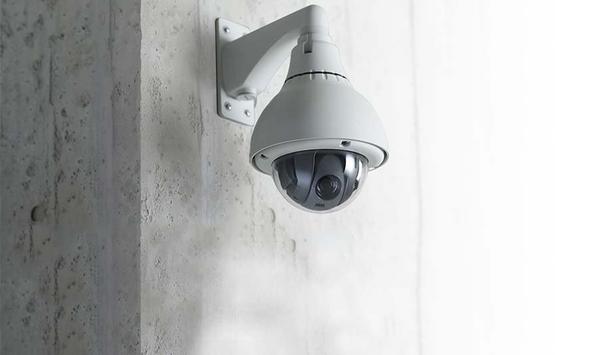
Security investments retailers should consider for their 2021 budget
Download
Smart security cameras: excellence in retail
Download
11 considerations for embedded system RFID readers
Download
Nine ways to make your retail security system work harder
Download
Loss prevention and beyond: How video innovation enriches retailers
Download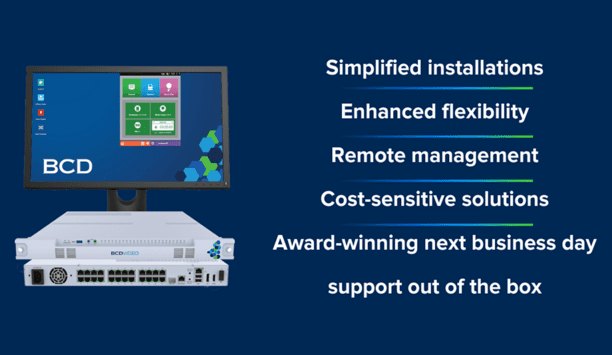
Understanding all-in-one solutions
Download
How video technology is transforming loss prevention, operations, and customer experience in the retail sector
Download
Why SAAS Security Platform is more popular in American SMEs
Download
A guide to moving physical security into the Cloud
Download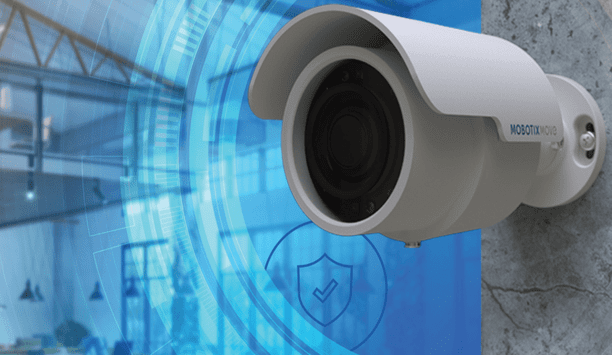
Intelligent video security solutions
Download
Security investments retailers should consider for their 2021 budget
Download
Smart security cameras: excellence in retail
Download
11 considerations for embedded system RFID readers
Download
Nine ways to make your retail security system work harder
Download
Loss prevention and beyond: How video innovation enriches retailers
Download
Understanding all-in-one solutions
Download
How video technology is transforming loss prevention, operations, and customer experience in the retail sector
Download
Why SAAS Security Platform is more popular in American SMEs
Download
A guide to moving physical security into the Cloud
Download
Intelligent video security solutions
Download

Videos
Retail security systems: Manufacturers & Suppliers

Using artificial intelligence (AI) to automate physical security systems
Download
A modern guide to data loss prevention
Download
7 proven solutions for law enforcement key control and asset management
Download
The truth behind 9 mobile access myths
Download
Access control system planning phase 2
Download